The old city in Colmar is precisely what makes this town in the east of France quite famous. It is only a little over an hour away from the EuroAirport Basel-Mulhouse-Freiburg.
I came here while returning from Strasbourg to Mulhouse where I had my accommodation and I planned to spend a few hours visiting the city centre. On the one hand, it was quite enough for my needs, while on the other, it would be more than pleasant spending a couple of days in Colmar and enjoying the sights it offers, as well as the food and especially wines that this whole area belonging to the Alsatian Wine Route is famous for. It was clear to me that I would not have the time to deal with food and even less with wines, for not only that I had little time available, but it was also very warm and I had already done a lot of sightseeing, and thus any wine would just bring me down completely. So, I just continued with the sightseeing. Here one gets inspiration easily enough.
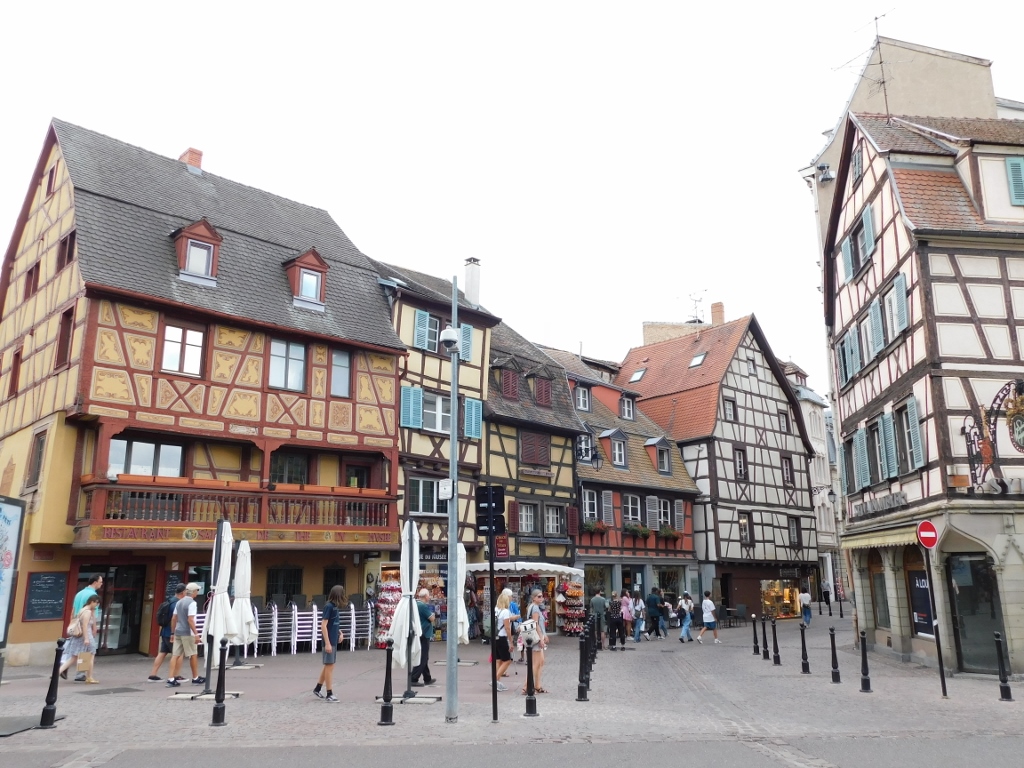 Colmar, a detail
Colmar, a detail
Although all the houses seem picture perfect, some of them are more important than others and stand out by some criterion. So, I first walked to a nearby house called Maison des Têtes, which means the House of Heads.
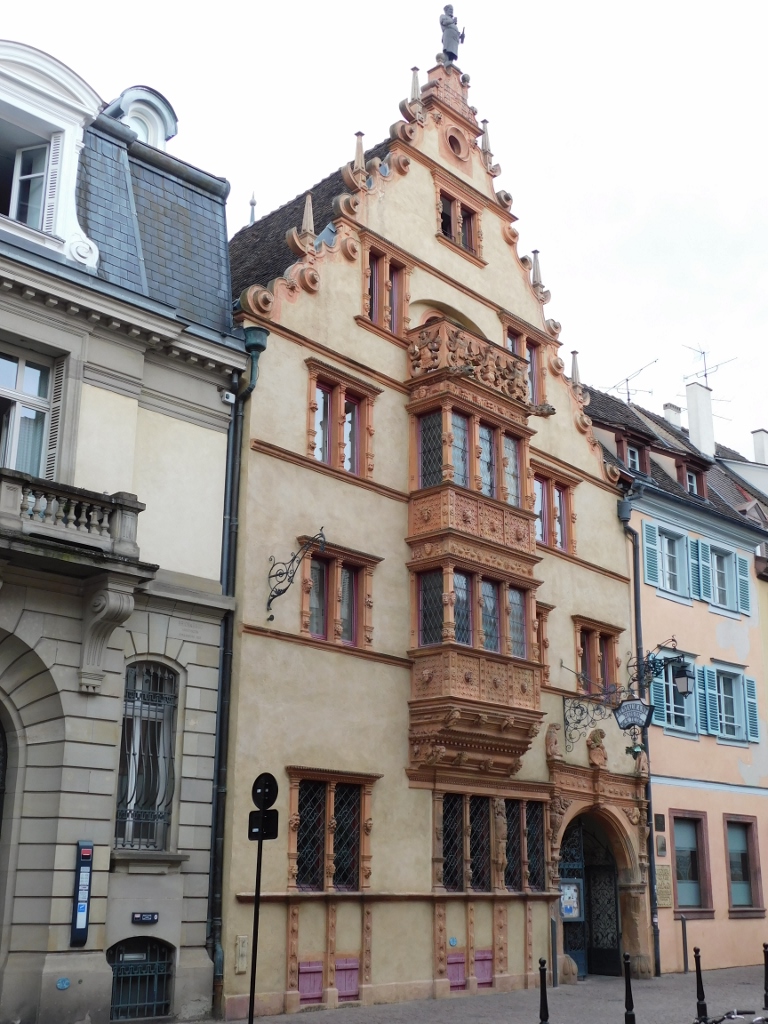 Maison des Têtes
Maison des Têtes
It was built in 1609 in the German Renaissance style and it owes its name to a large number of face masks and grimaced faces that decorate its front facade.
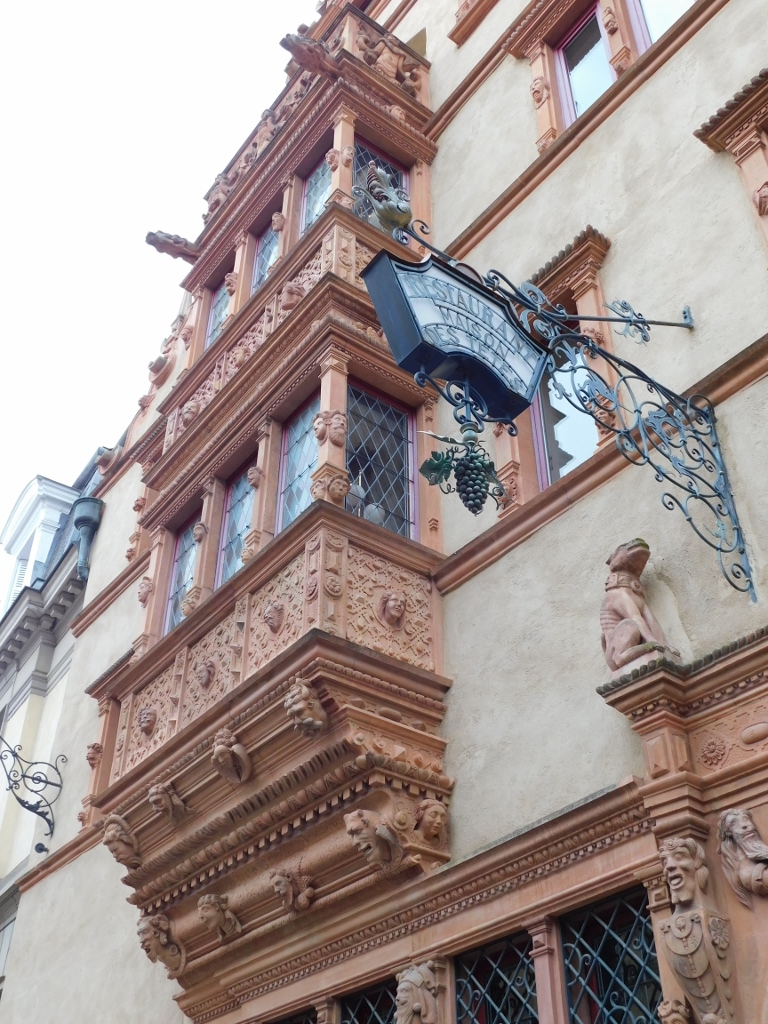 Maison des Têtes, a detail
Maison des Têtes, a detail
The Maison des Têtes was built for merchant Anton Burger who became the mayor of Colmar in 1626. From 1898, the house became the property of the Wine Exchange of Colmar (Bourse aux Vins de Colmar) and after that, in 1902, a sculpture of the Alsace barrel-maker post put on the top of its pediment.
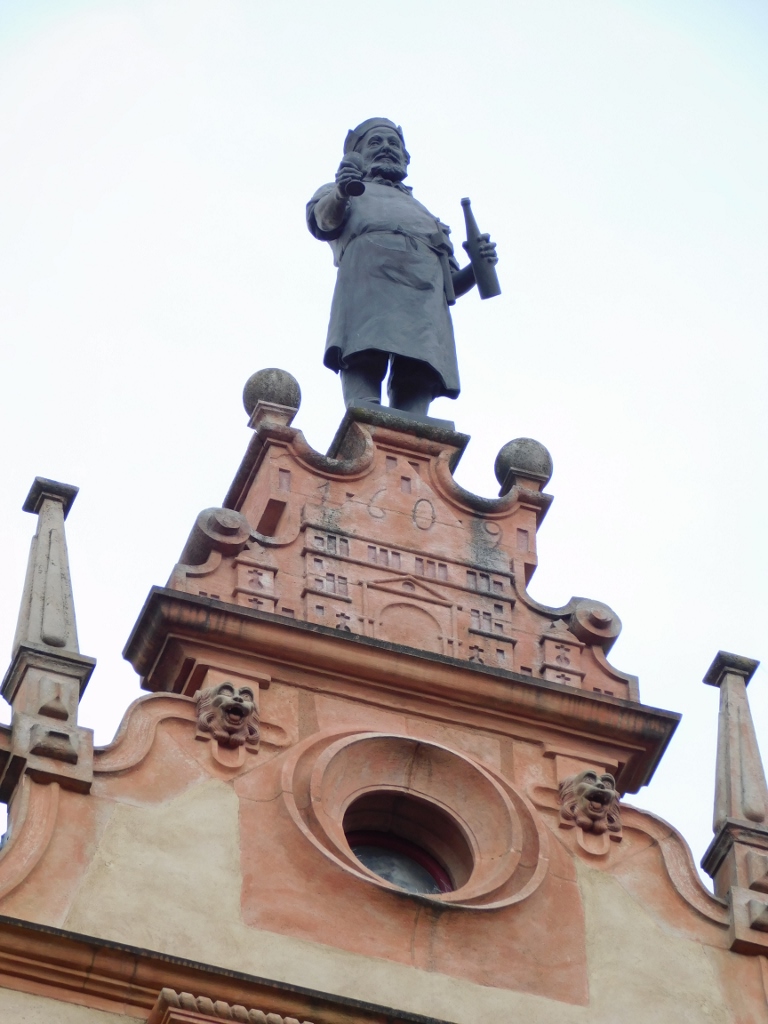 Maison des Têtes, a detail
Maison des Têtes, a detail
You can enter the courtyard here where not only there are places to sit, but there is also a view at numerous interesting details.
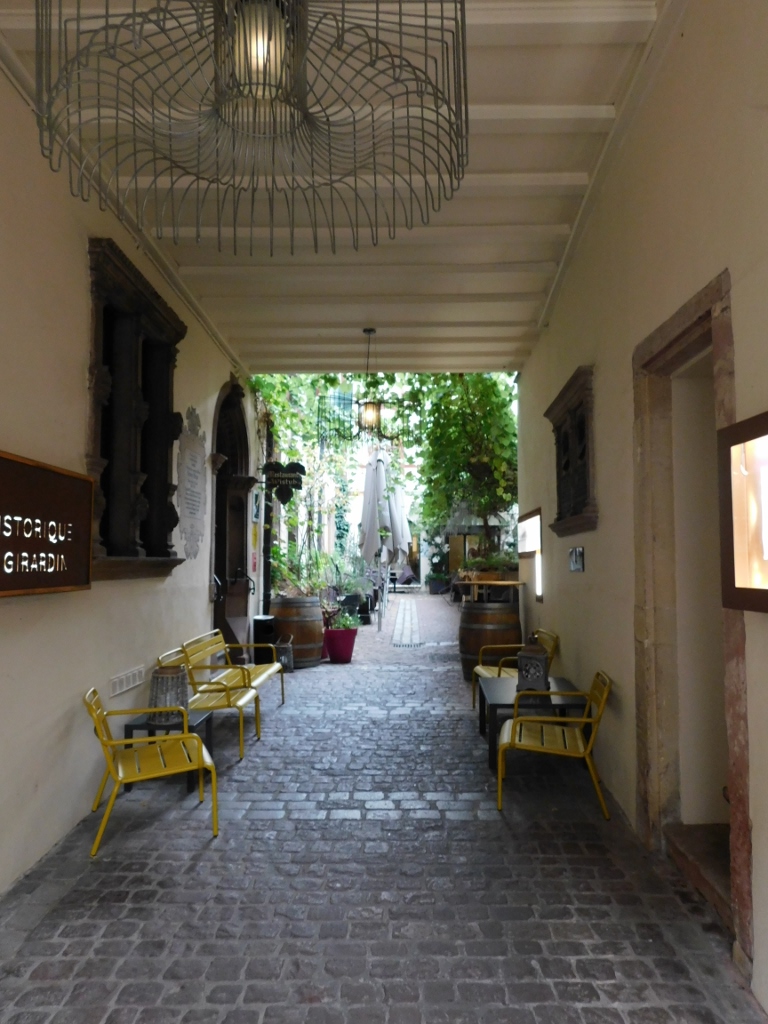 Maison des Têtes, a detail
Maison des Têtes, a detail
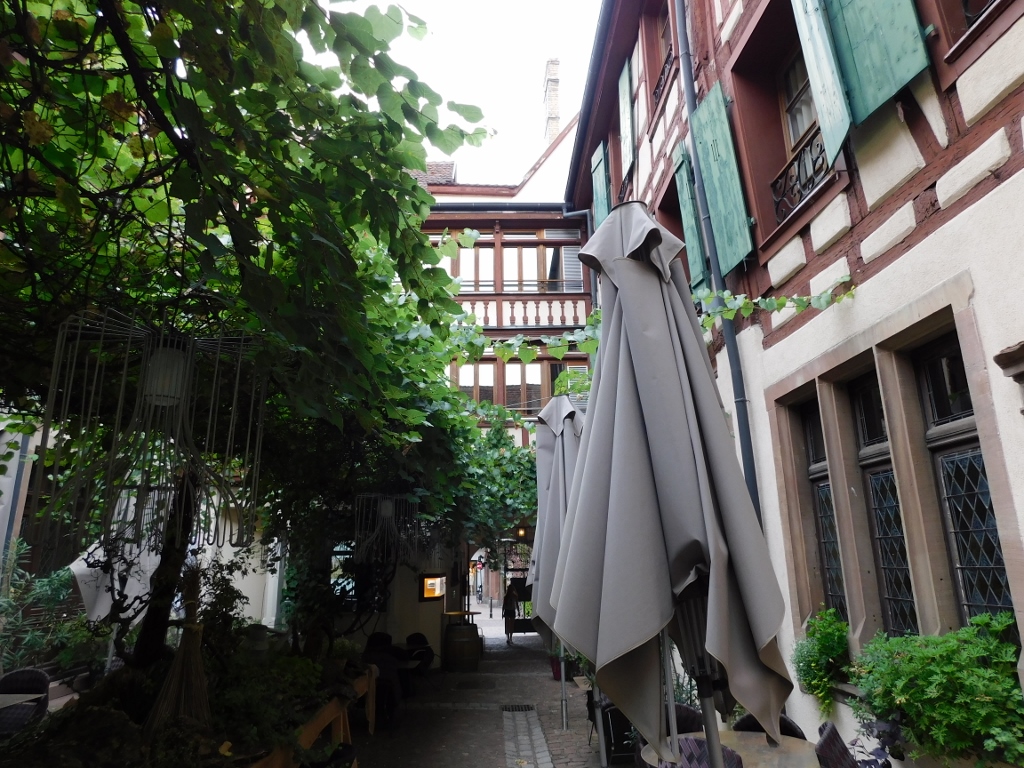 Maison des Têtes, a detail
Maison des Têtes, a detail
Now I returned to the “main” street and there I continued with a very pleasant stroll. I saw the tower of St. Martin’s Church (Église Saint-Martin) in front of me, but I was in no hurry, so I first thought I could stop at the Dominican Church (Église des Dominicains) from 1289–1364. A part of the latter church may be seen on the right-hand side in the photo below.
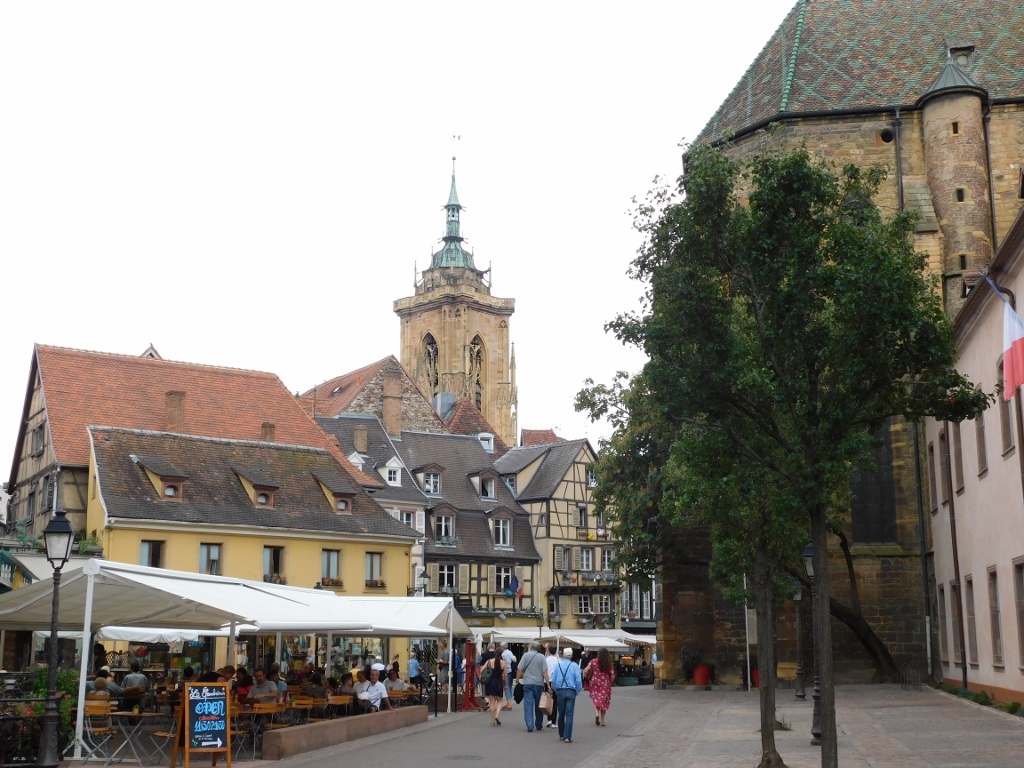 Colmar, a detail
Colmar, a detail
However, it was early afternoon and the church, that is no longer active, but has interesting things that are worth seeing, was closed. According to what I saw, it is not open on all days, so the visitor needs to inquire and see when this edifice can be visited.
I must admit I was not very sorry because I could not see all the things in Colmar I was originally keen on, simply because it seemed quite enough just to walk around – the little town is incredibly attractive and full of picturesque sights, primarily in the form of houses built in the traditional half-timber style.
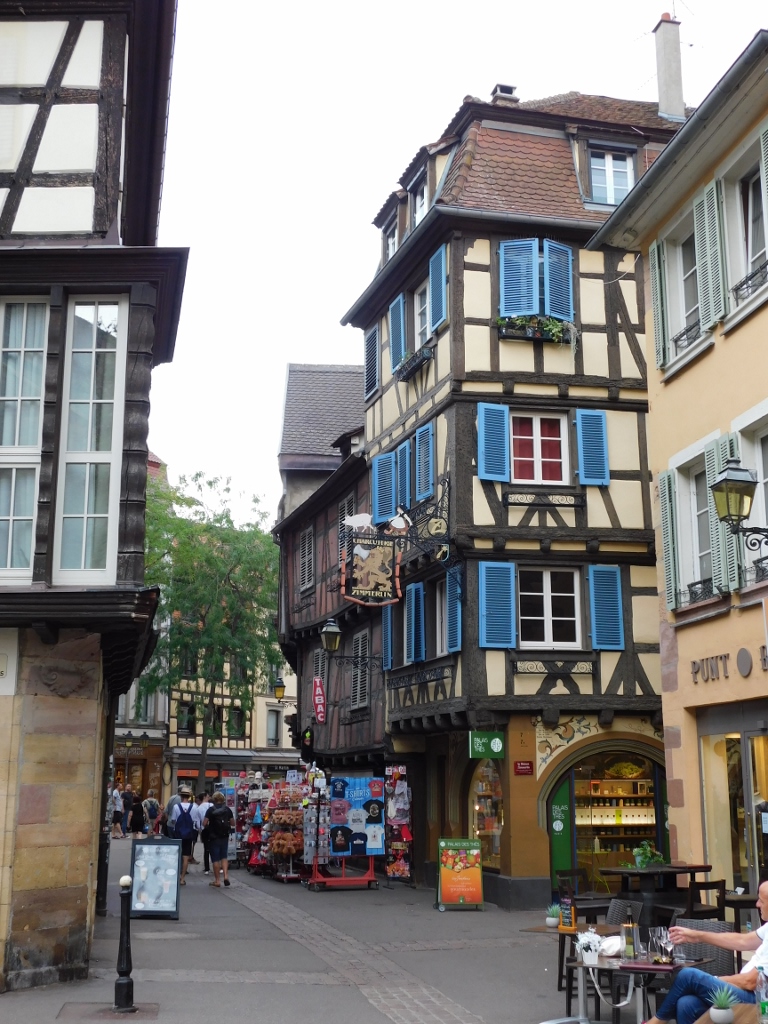 Colmar, a detail
Colmar, a detail
So I noticed on one of the buildings that it dates back to 1379. This is the Maison zuem Soppen.
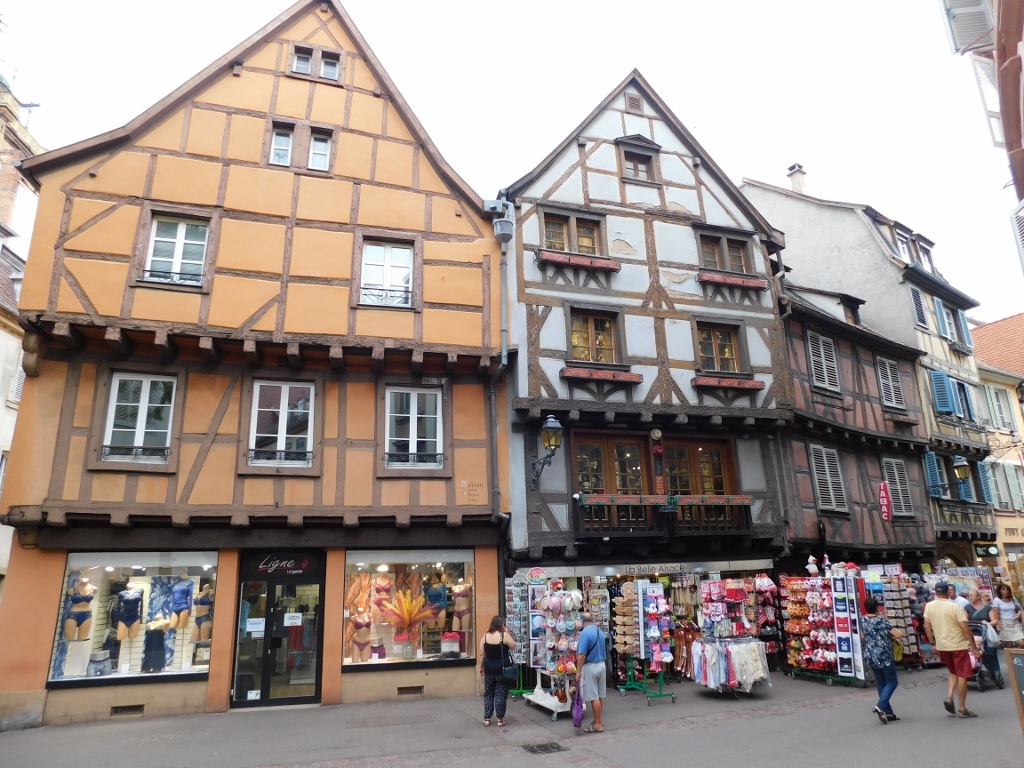 The house from 1379 is on the left-hand side
The house from 1379 is on the left-hand side
Since the Old City of Colmar is not very big, soon I also reached St. Martin’s Church, the construction of which took place in the period of 1234-1365.
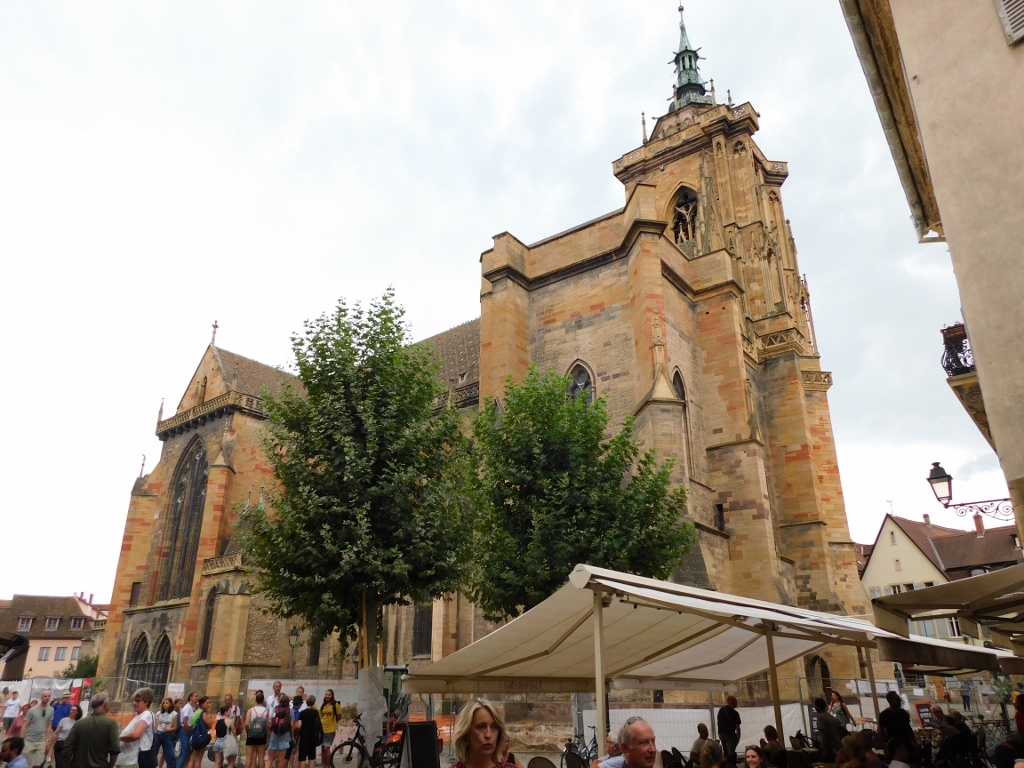 St. Martin’s Church
St. Martin’s Church
This is the biggest church in Colmar and because of its size it is often called a cathedral, although this has never been the seat of a bishopric. The photo below is a little blurry, but it serves well as an illustration of the interior of the church.
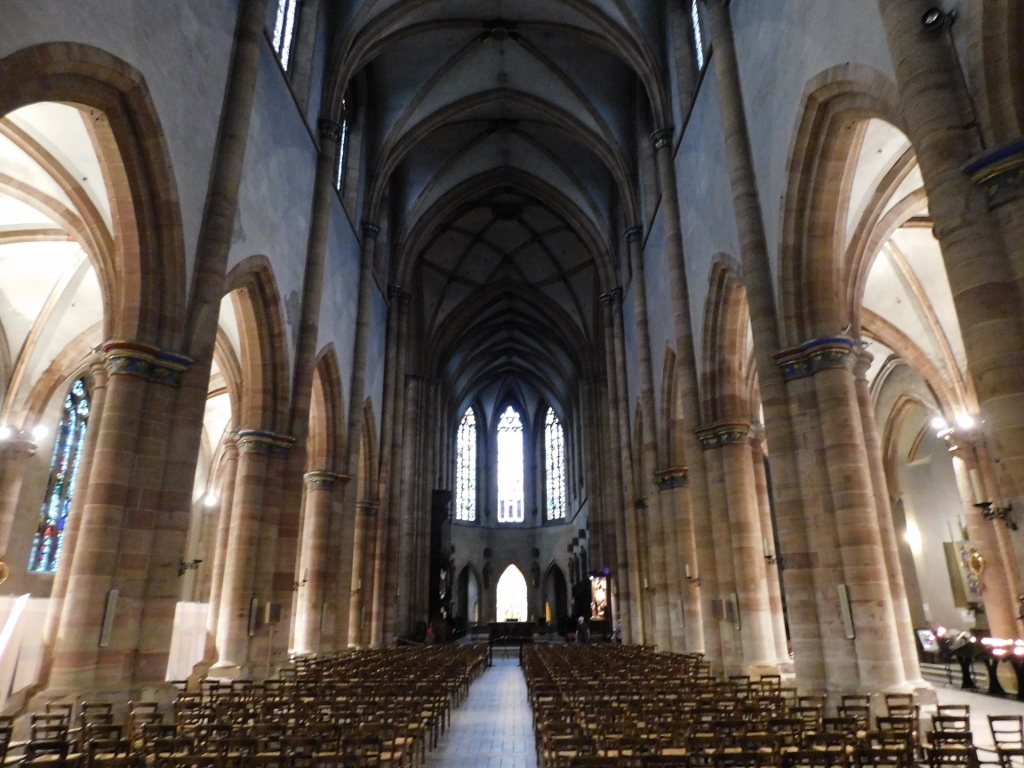 St. Martin’s Church, the interior
St. Martin’s Church, the interior
At the time of my visit to Colmar, there were some construction works going on around the church and it was quite difficult to get a good photo of the church from different angles without having all sorts of fences and debris in the photo.
So I turned my attention to the building that is directly opposite the south wall of St. Martin’s Church, although there are elements of contemporary works in the following photo as well. From the angle from which I took it, this was inevitable. The building is the Ancient Guard House (Ancien Corps de garde).
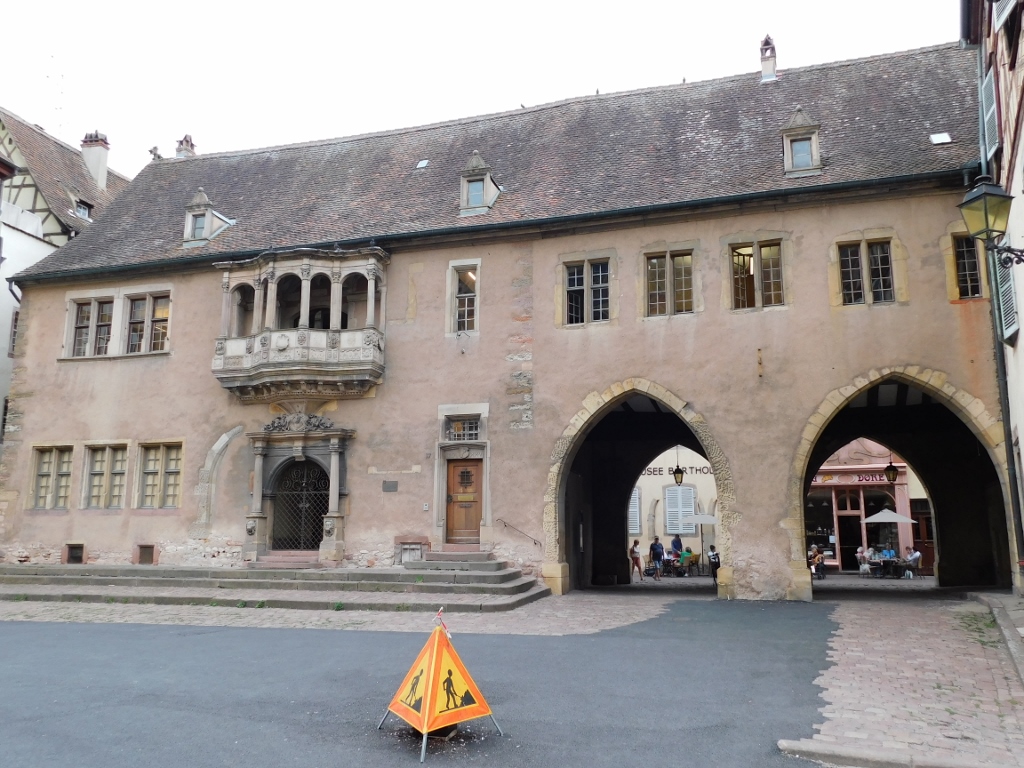 Ancient Guard House
Ancient Guard House
This building from 1575 was made in the German Renaissance style and the frame of an old chapel from the 13th century that used to house the ossuary from the earlier cemetery that went along with St. Martin’s church was used in its construction. The original idea was to use the building as the town hall, but this was changed. In any case, one of the most striking elements is the loggia on the front facade of this edifice.
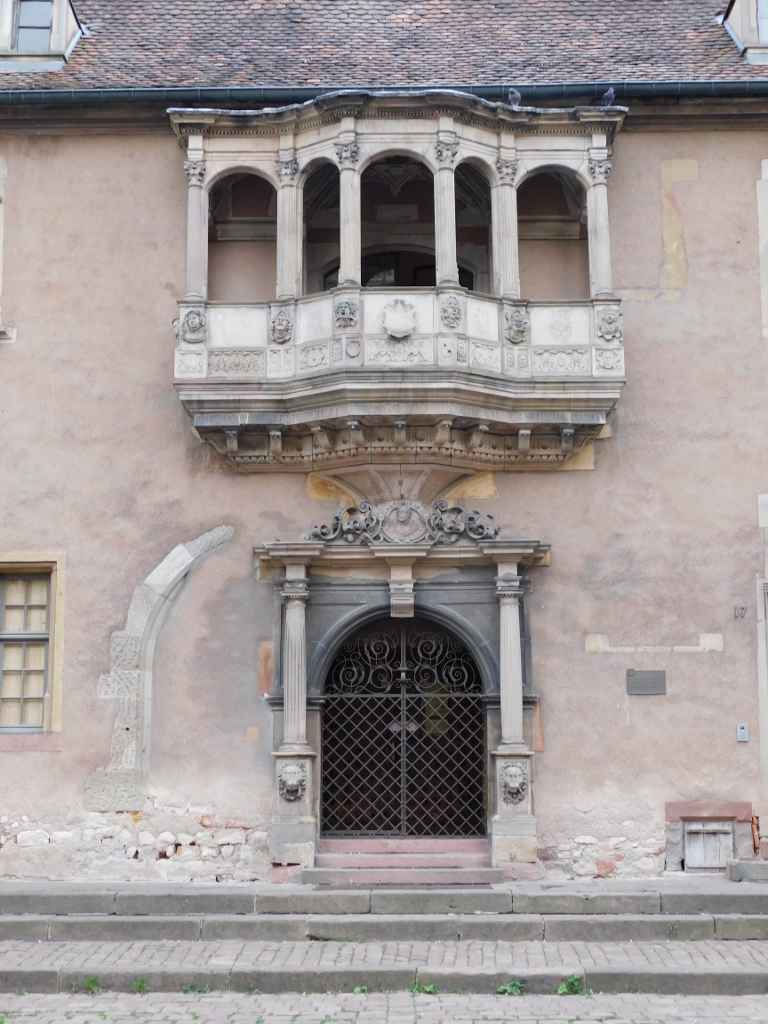 Ancient Guard House, a detail
Ancient Guard House, a detail
On the lateral side of the smallish square that practically exists in front of the Ancient Guard House, I noticed yet another picturesque detail which actually belongs to one of the oldest houses in Colmar from 1350 – the Maison Adolph.
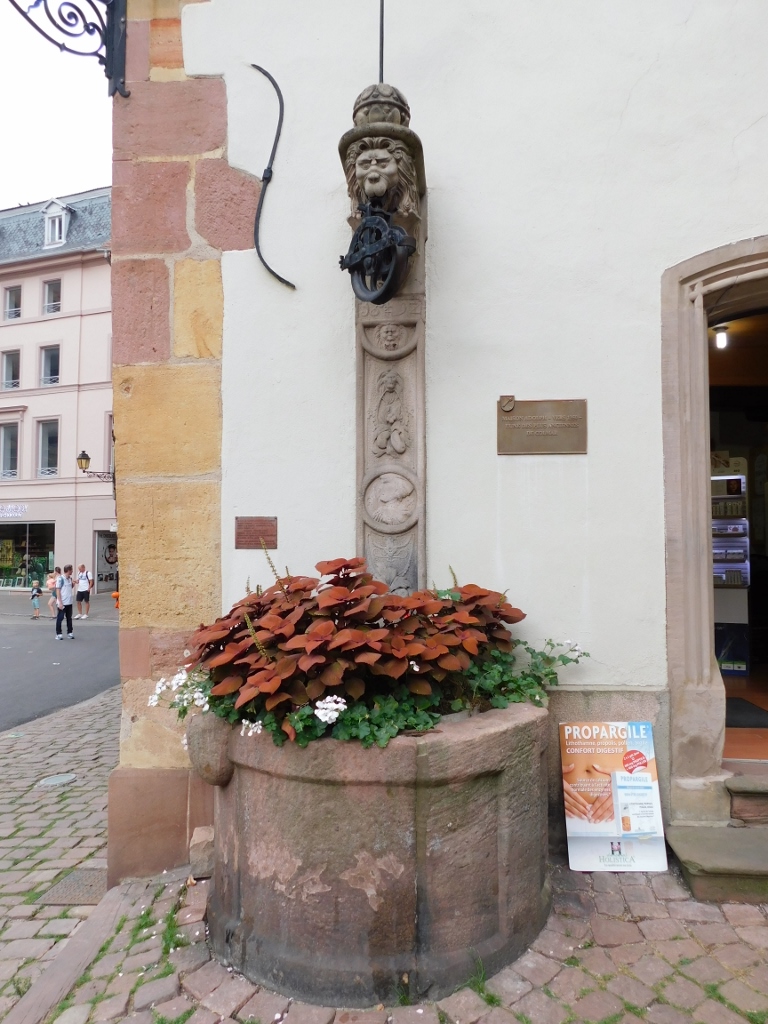 Maison Adolph, a detail
Maison Adolph, a detail
Now I could move on with my walk along the lovely little streets of Colmar. If there were no shops and “inappropriately dressed individuals,” one could easily imagine being in the Middle Ages.
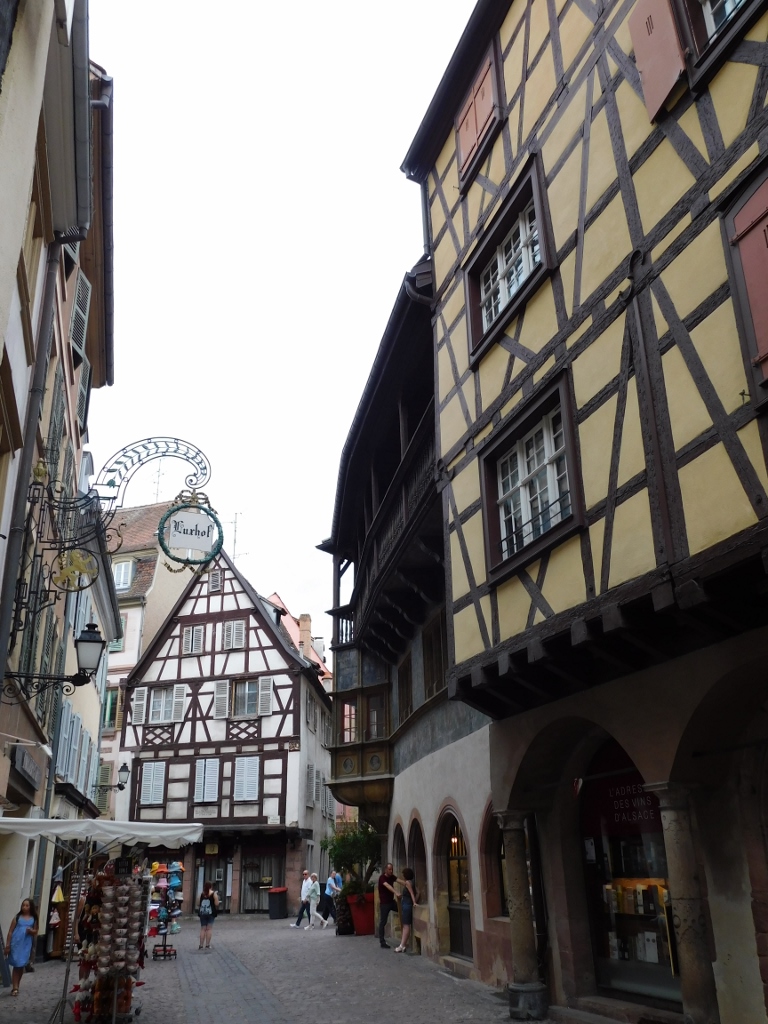 Colmar, a detail
Colmar, a detail
Less than 100 m from St. Martin’s Church, you come to one of the most beautiful houses in Colmar. This is the Maison Pfister from 1537.
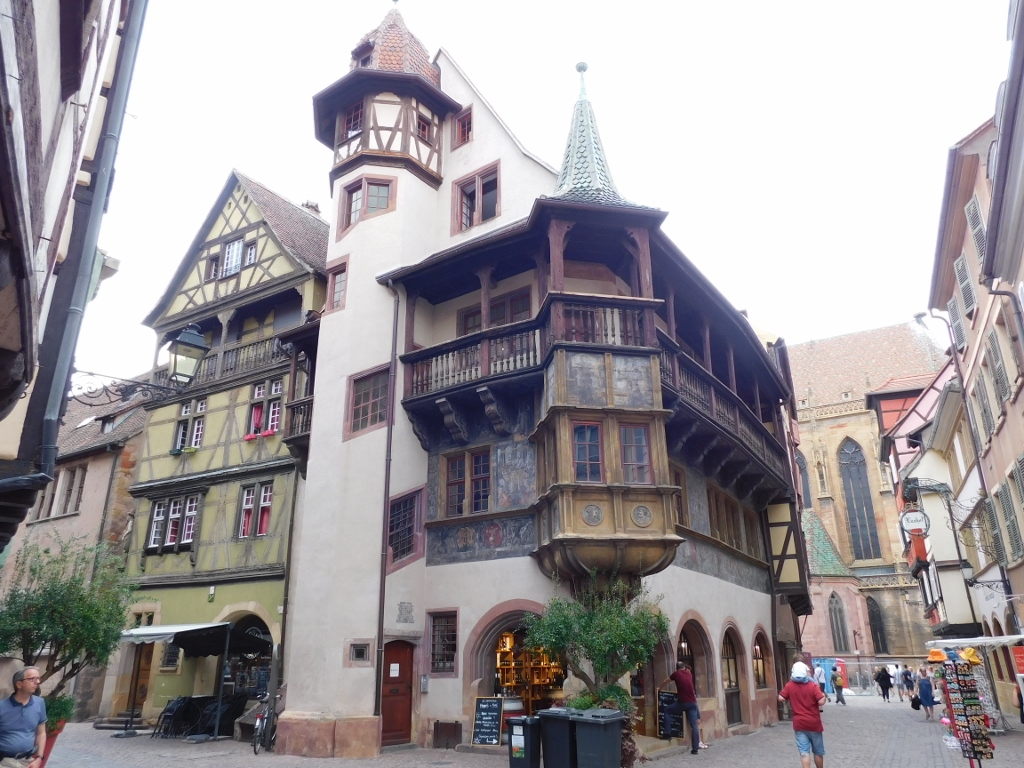 Maison Pfister (the church may be seen in the background on the right-hand side)
Maison Pfister (the church may be seen in the background on the right-hand side)
This house was also built in the German Renaissance style and during the history it changed owners and was restored several times. What is particularly characteristic is the two-storey bay window with a pyramidal roof, as well as the frescoes and medallions that can be seen on the outside. When I was here, the light was not ideal, so the following photo is a little pale, but it still illustrates well the incredible beauty of this house.
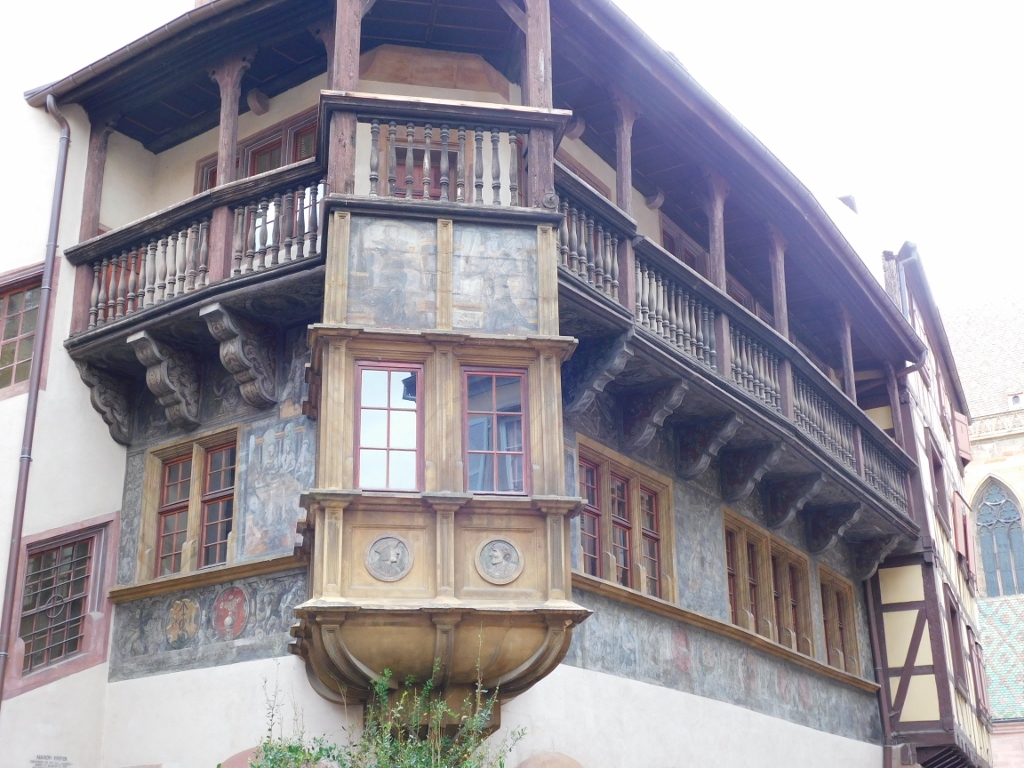 Maison Pfister, a detail
Maison Pfister, a detail
Again I continued with my stroll before getting to the next “important” building. But, even all of those houses that I could see along the way were no less interesting and I certainly kept enjoying the sights I was surrounded with.
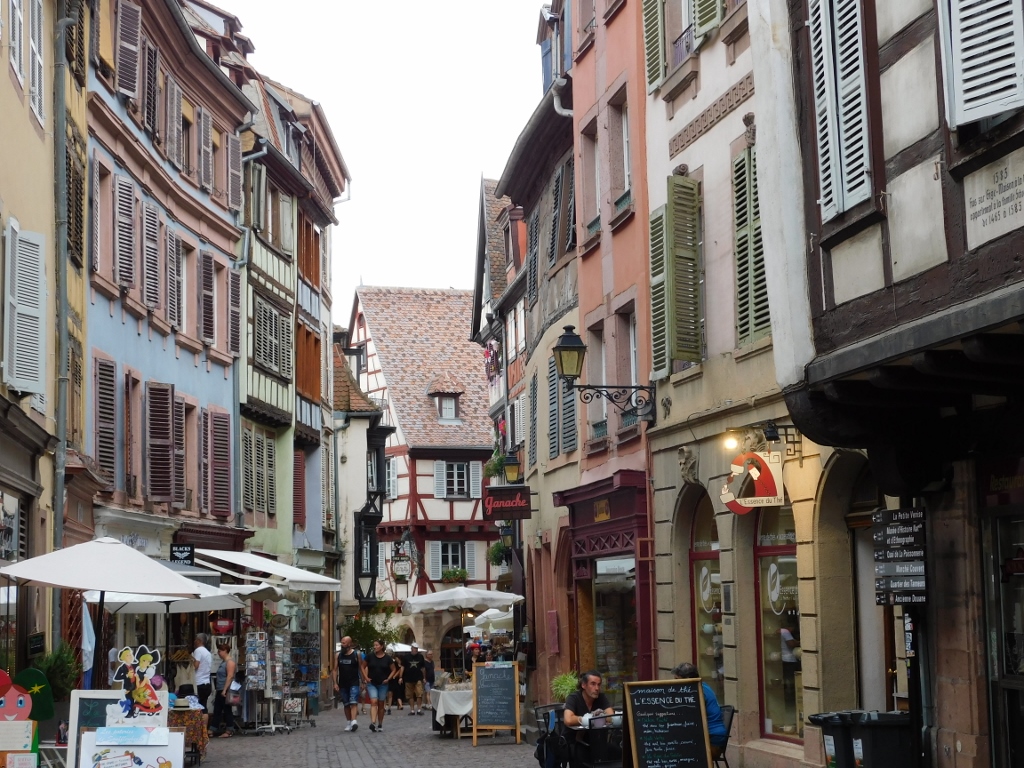 Colmar, a detail
Colmar, a detail
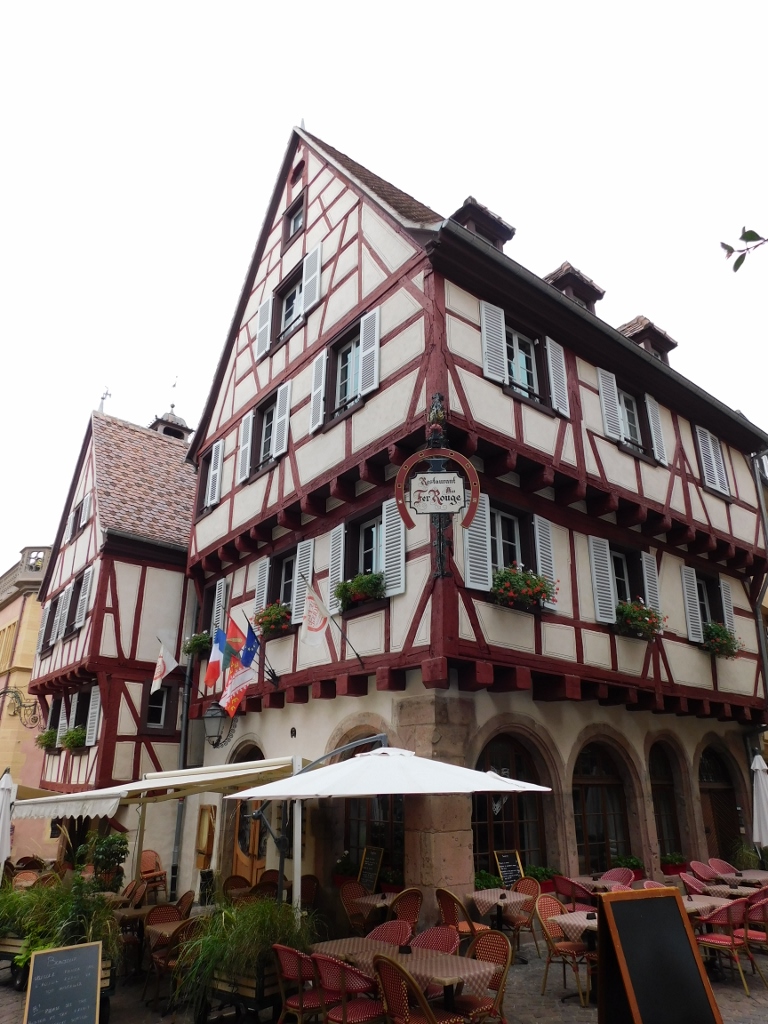 Colmar, a detail
Colmar, a detail
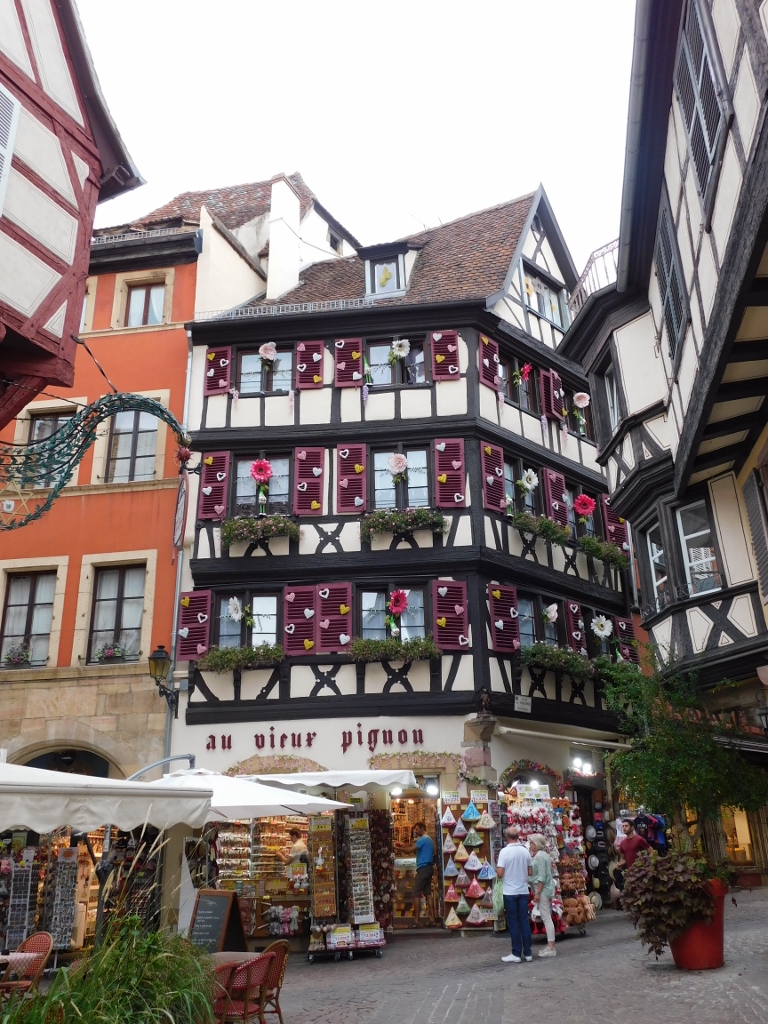 Colmar, a detail
Colmar, a detail
 Colmar, a detail
Colmar, a detail
When I got to an extension of the street, a square, I would say, at the crossroad of Rue des Marchands and Grand Rue, from which I made the photo above, first I noted the Maison Kern from 1594, yet another example of the German Renaissance style in the town, that is located not far from this square.
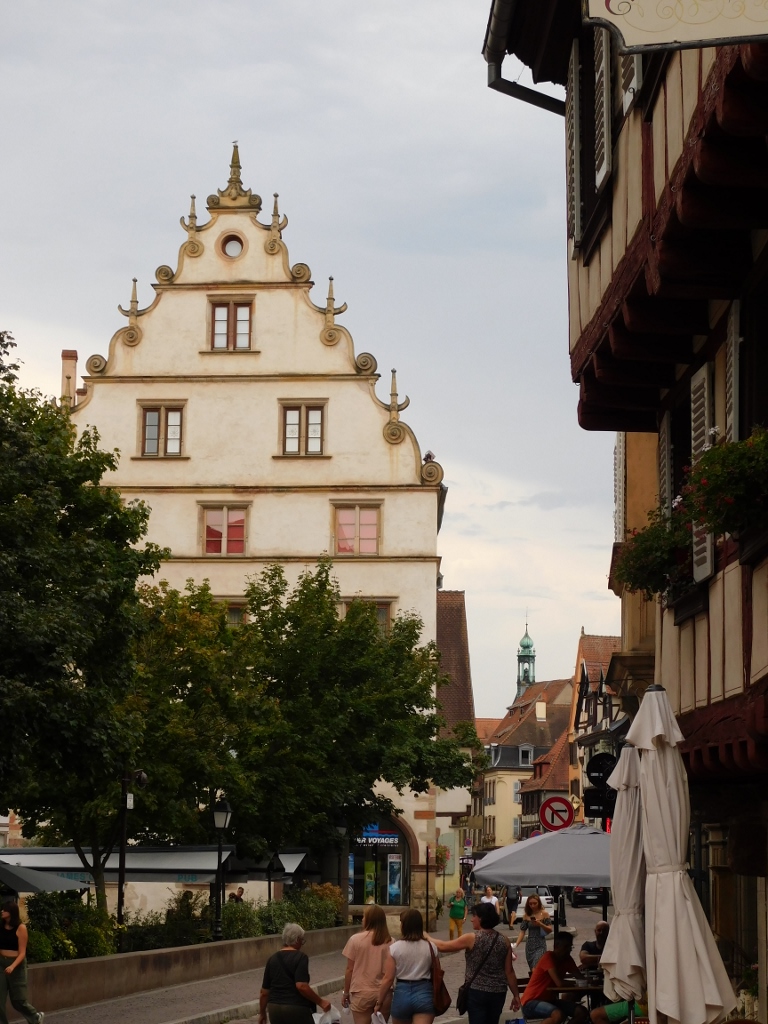 Maison Kern
Maison Kern
And then I paid attention to the most important edifice at this site. This was the Old Customs House (Ancienne Douane), also called the Koïfhus.
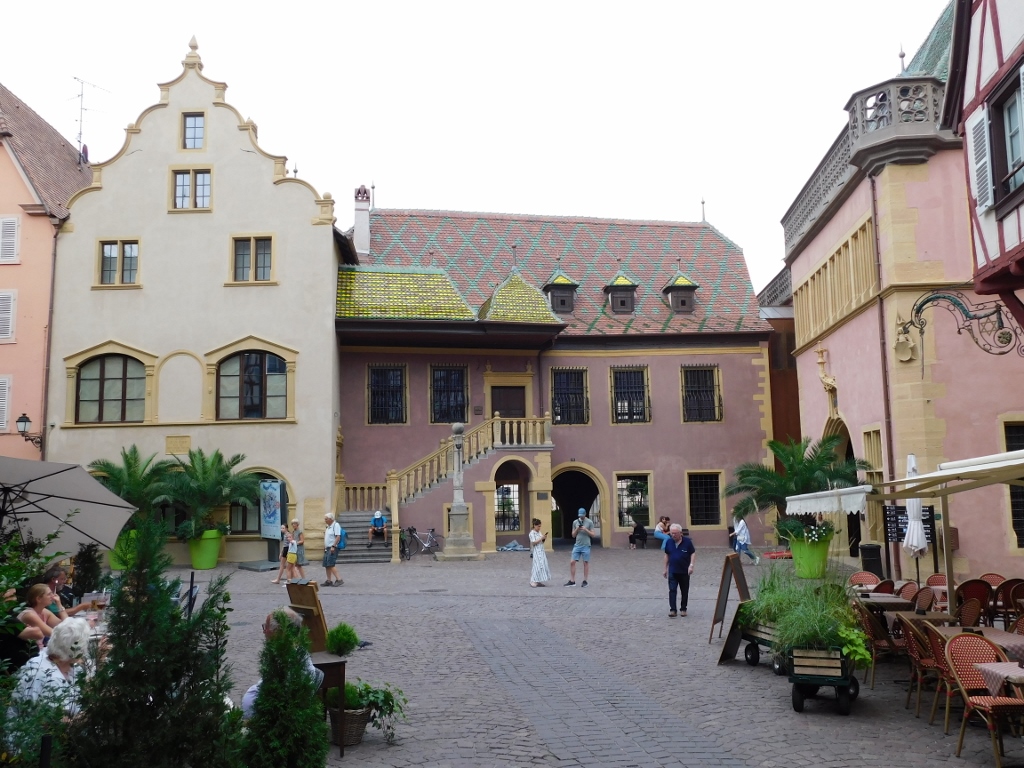 Koïfhus
Koïfhus
The construction of this building was completed in 1480 and this is yet another of the historic monuments in Colmar.
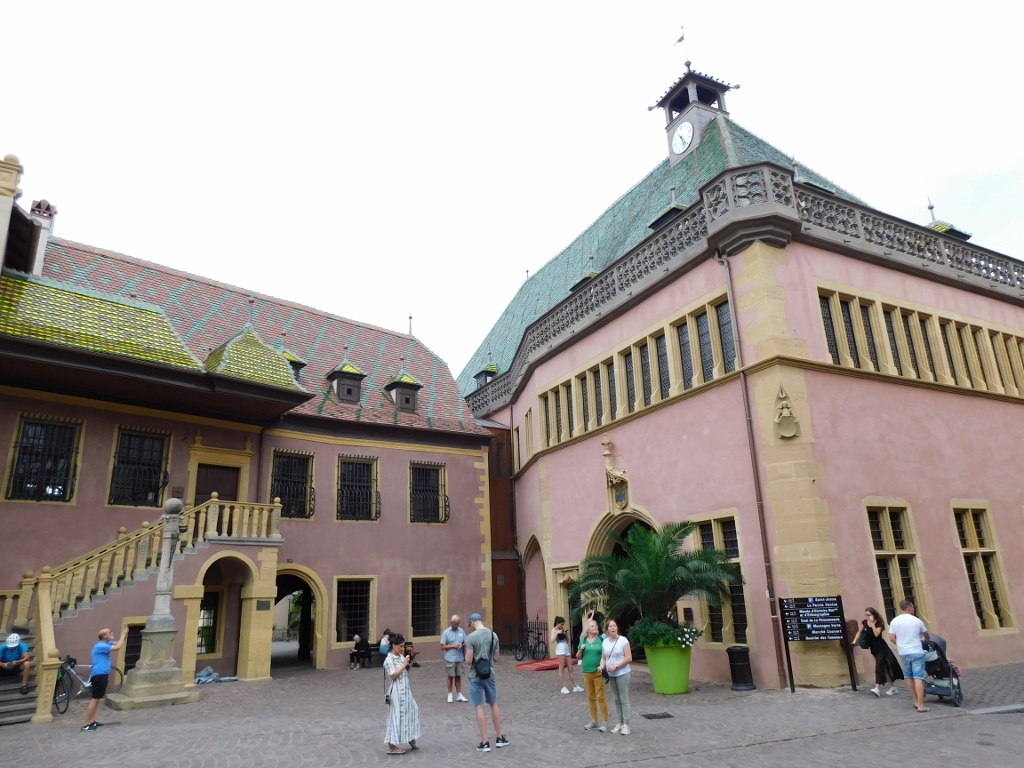 Koïfhus
Koïfhus
It would have been good if I made a circle around the building, since this makes it possible to look at it from different angles. However, I was getting tired and there were a few other places I wanted to see. I have already mentioned that despite the fact that the Old Town in Colmar is not very big, the visitor can easily spend a couple of days here without getting bored. And so, I walked through the passage on the ground floor of the Old Customs House which brought me to a canal, a new square (Place de l’Ancienne Douane) and Fontaine Schwendi from 1898.
 Place de l’Ancienne Douane
Place de l’Ancienne Douane
The Schwendi Fountain is interesting since the statue on its top is a design of French sculptor Frédéric Auguste Bartholdi (1834-1904) who was born right here in Colmar. Moreover, here, at the house where the sculptor was born, not far from Maison Pfister, a museum dedicated to the artist was opened in 1922. He is famous for being the creator of the Statue of Liberty in New York.
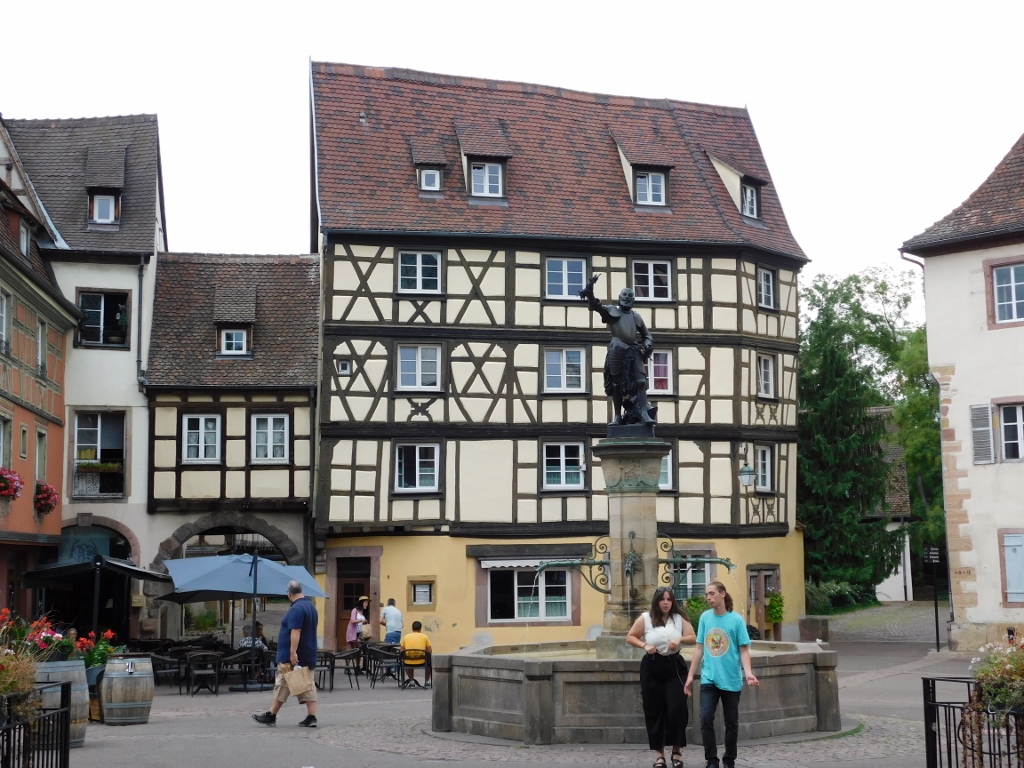 Fontaine Schwendi
Fontaine Schwendi
The walk took me now in a very specific direction, but there are interesting sights throughout the historic centre of Colmar, primarily in the shape of old half-timbered buildings, even when they are not listed as important or famous.
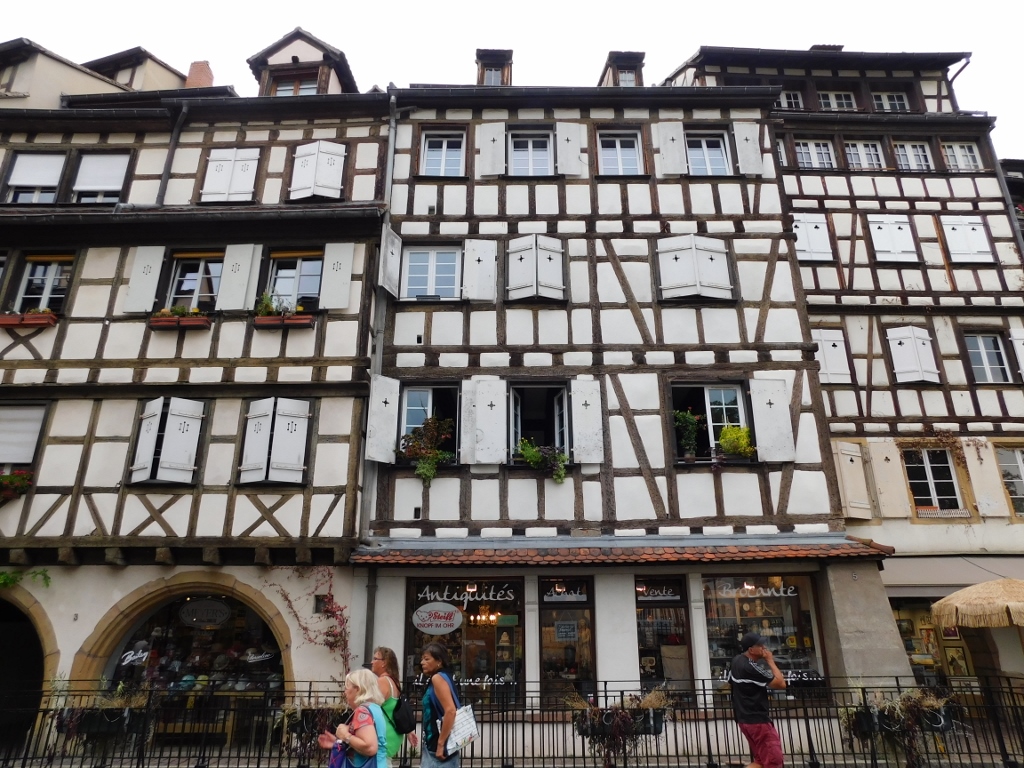 Colmar, a detail
Colmar, a detail
To start with, I walked past a covered market (Marché couvert) from 1865 that is still fully functional.
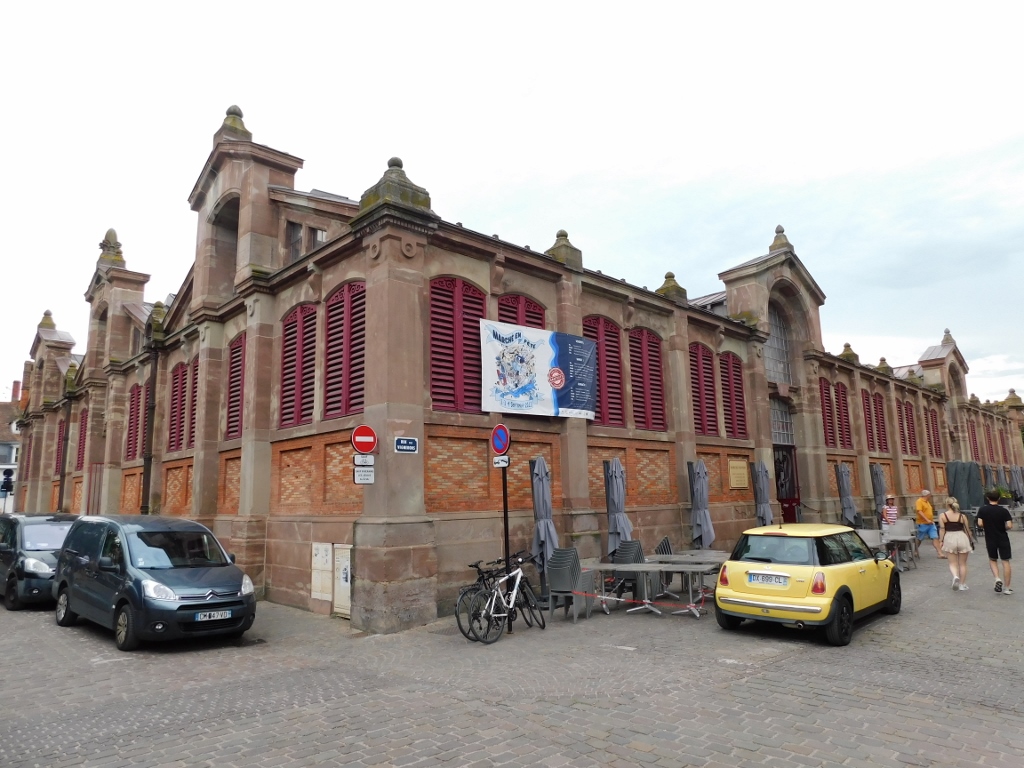 Covered market in the centre of Colmar
Covered market in the centre of Colmar
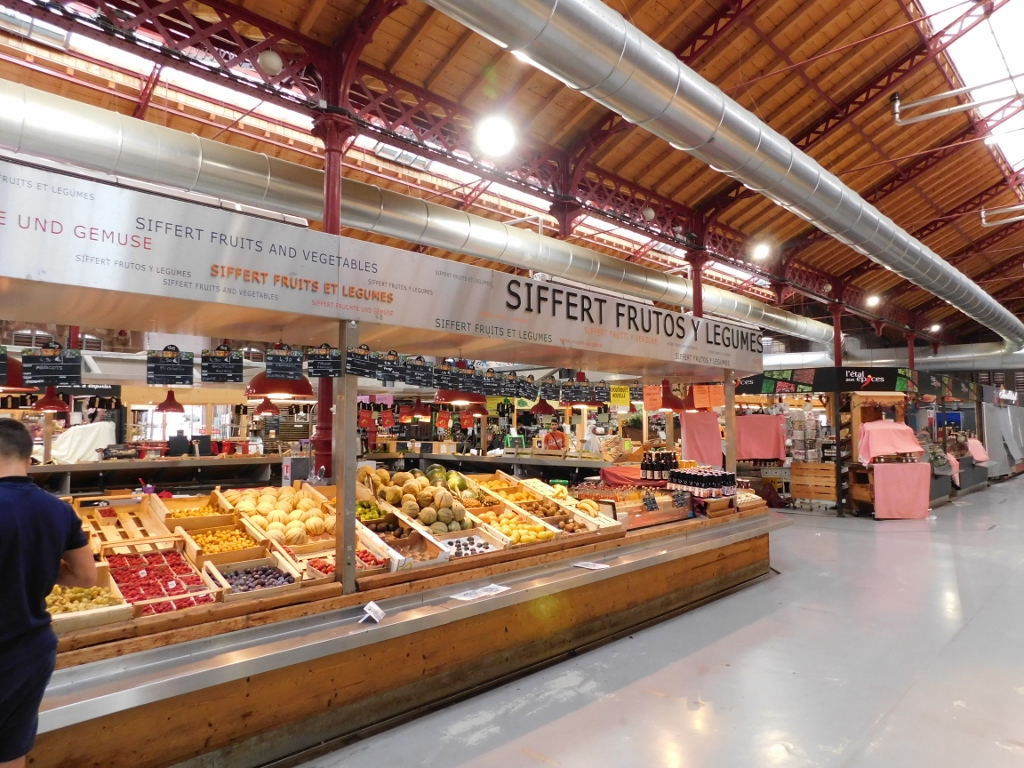 Covered market in Colmar, a detail
Covered market in Colmar, a detail
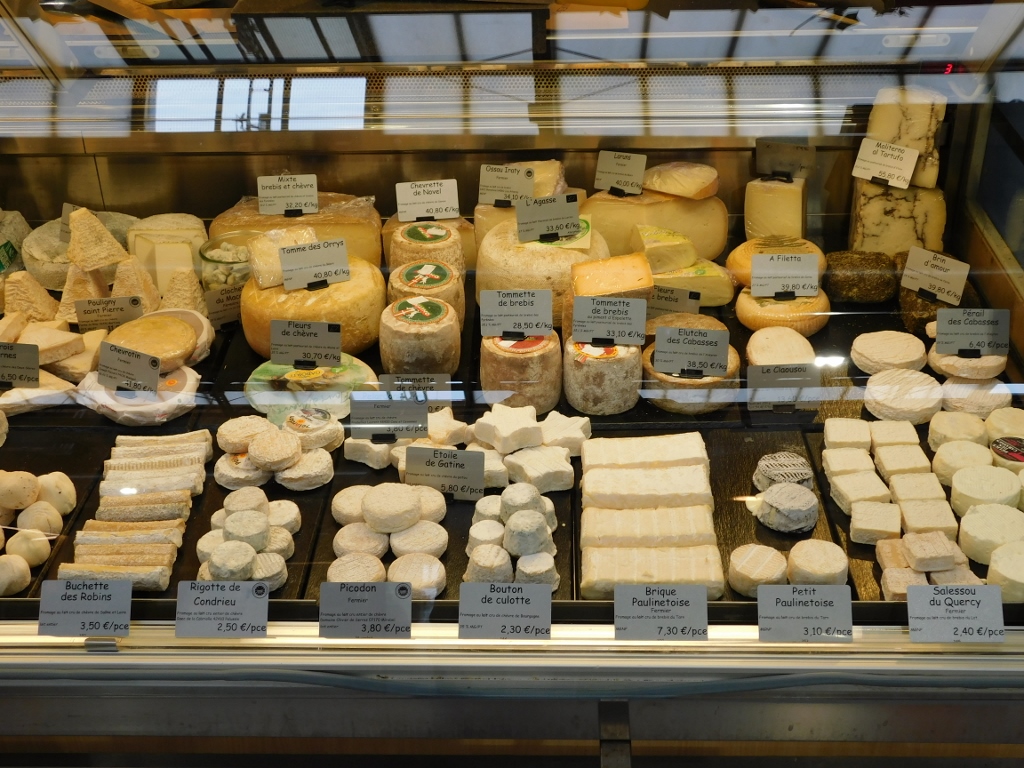 Covered market in Colmar, a detail
Covered market in Colmar, a detail
My goal was to get to Little Venice (La Petite Venise), a quarter that is reached as soon as you cross a bridge behind the market.
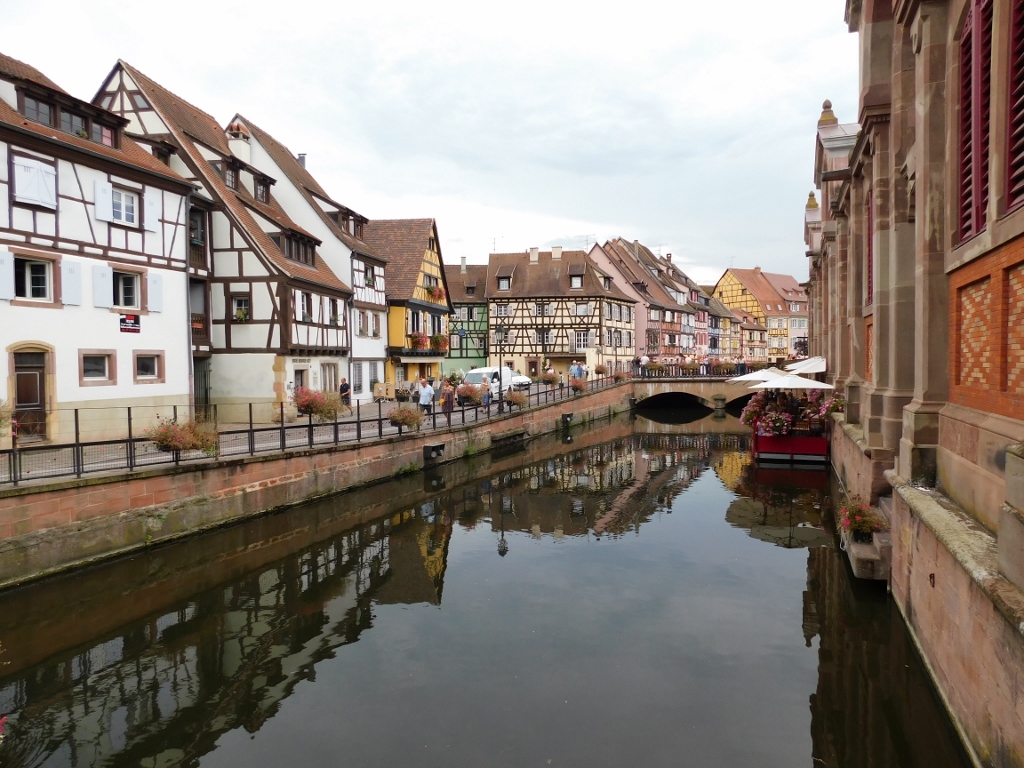 Little Venice in Colmar; the covered market is to the right
Little Venice in Colmar; the covered market is to the right
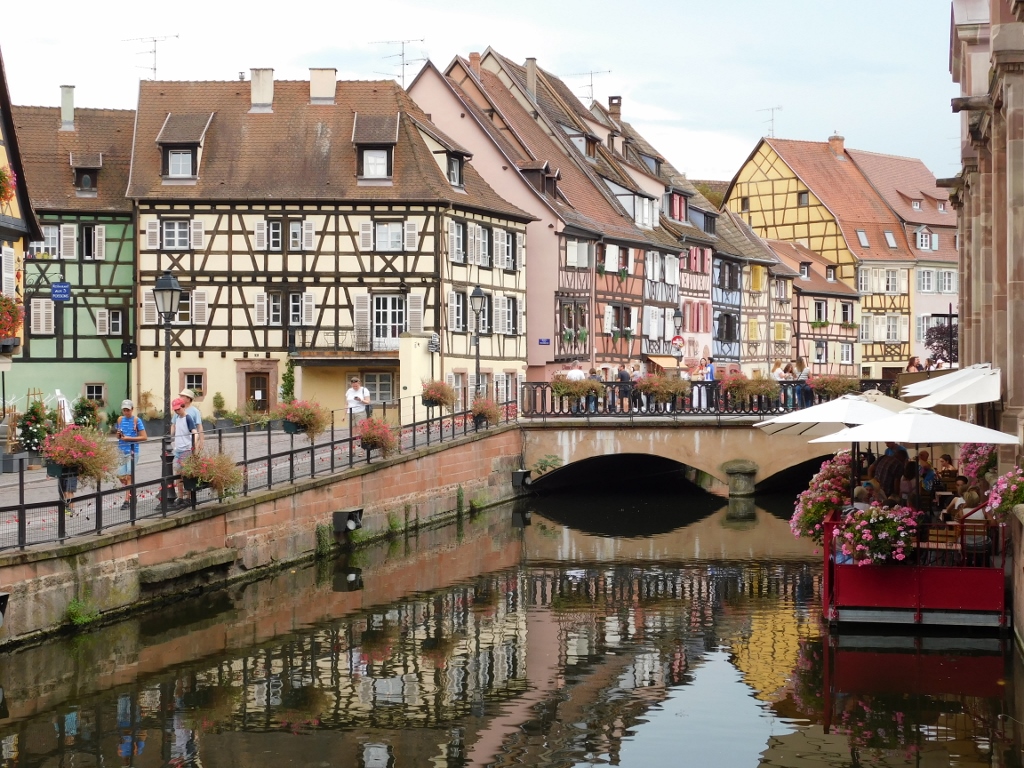 Little Venice in Colmar
Little Venice in Colmar
The water that can be seen in the previous photos is in fact the Lauch river, while the gorgeous houses seen here were built in the traditional Alsatian architectural style.
 Little Venice in Colmar
Little Venice in Colmar
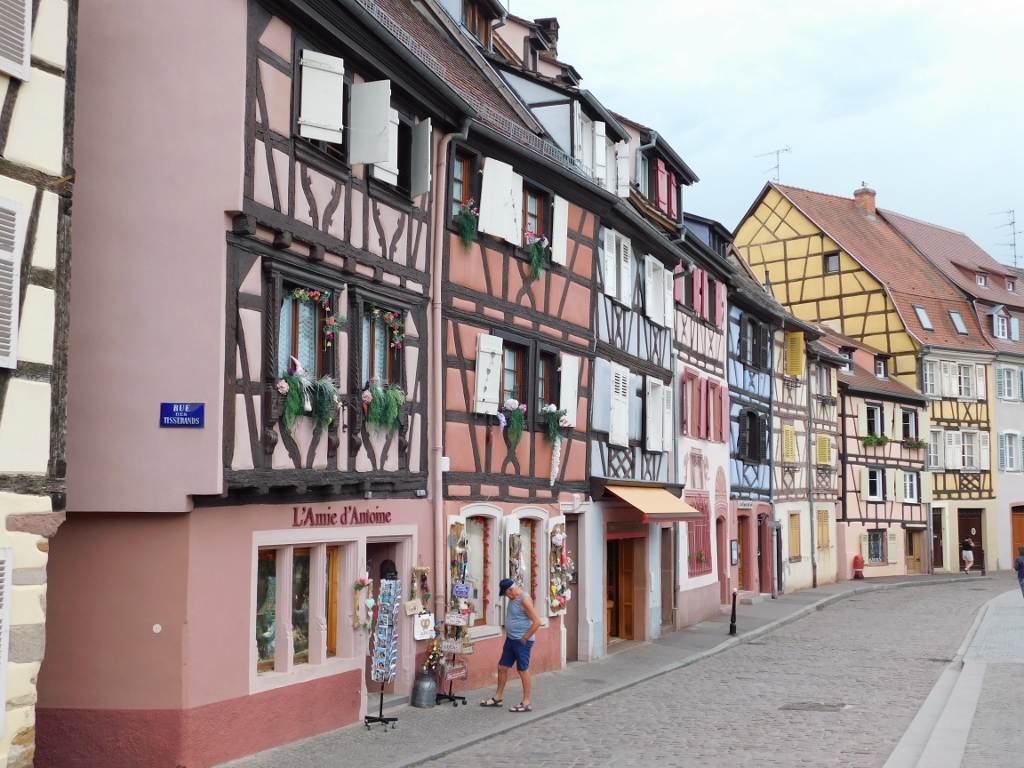 Little Venice in Colmar
Little Venice in Colmar
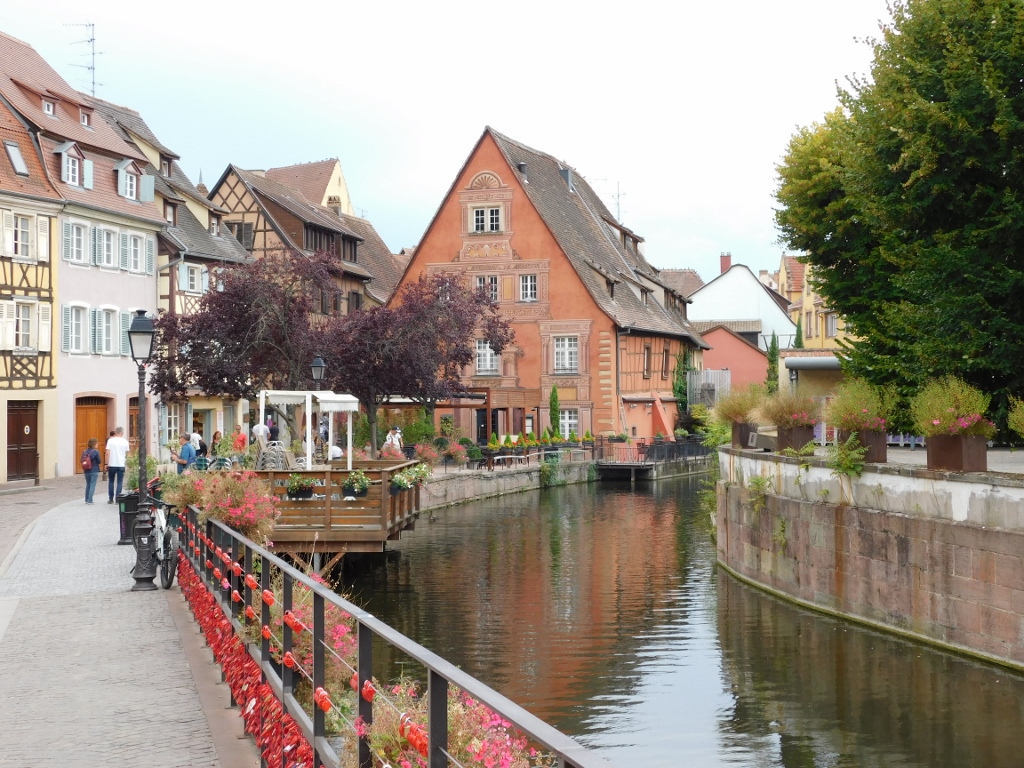 Little Venice in Colmar
Little Venice in Colmar
I came here not only to admire the buildings from the level of the streets, but also in order to go on a tourist boat trip. One of such boat could be seen from the riverbank.
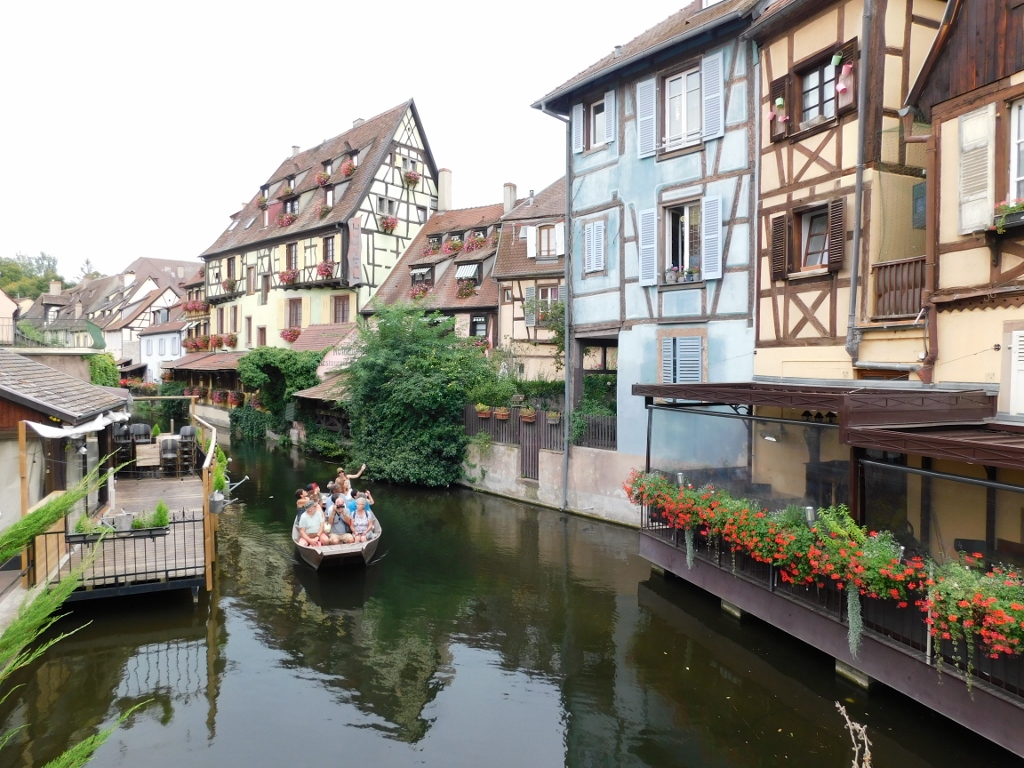 Soon I’ll be doing this, too
Soon I’ll be doing this, too
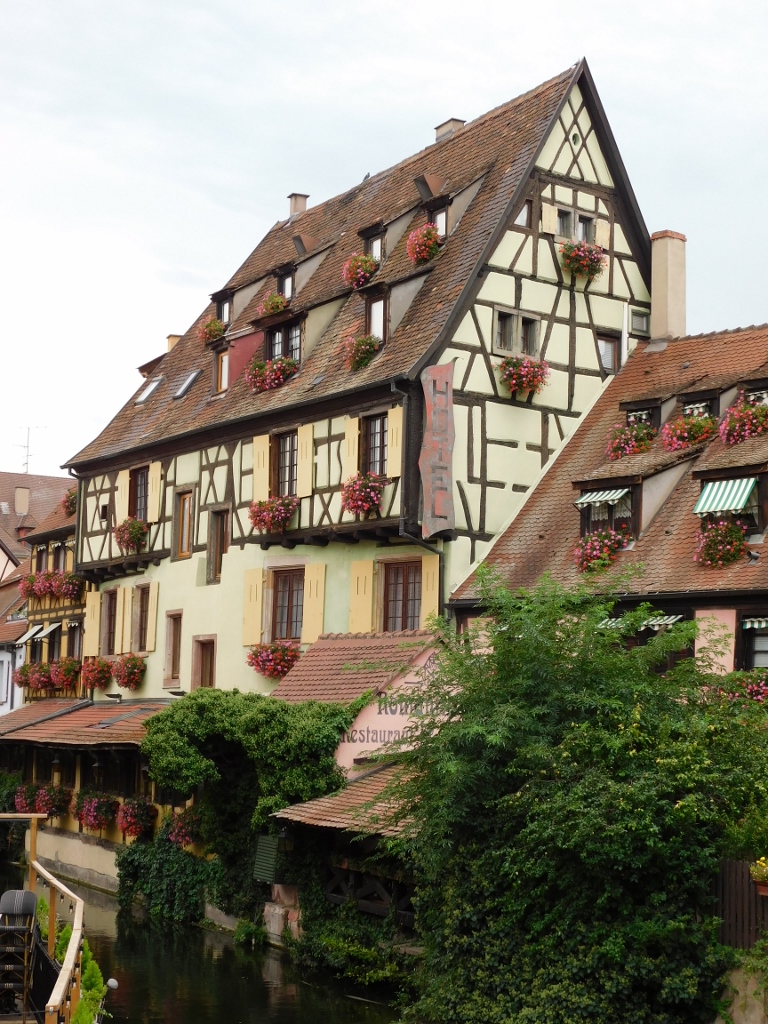 Little Venice in Colmar, a detail
Little Venice in Colmar, a detail
The Google map shows two spots as the starting point for these trips. However, one of these two spots was not operational in August 2022. There were some signs pointing to the place from which the boats started, but they did not seem clear enough to me. So, I inquired with some local people and soon I reached the right place. It was situated by a bridge called Pont St-Pierre.
The visitors are organised by the languages of the trips, with the boats being big enough for a dozen of people. I said that I did not mind the language, either English, Italian, Spanish or French. As I was saying this to the man selling the tickets, he was visibly impressed, so I added with a smile – Serbian, as well. (If I fell for the contemporary linguistic politicised propaganda, I could also add – Croatian, Bosnian and Montenegrin. But, even today, what I write in my CV is – Serbo-Croatian. It covers it all.)
As for my trip, the first group was in Spanish and I went with them, which was ideal in terms that I did not have to wait for long.
The story of the guide was in fact secondary to me, but the sights were magnificent. First we started by sailing briefly through a more sparsely populated area and there, through the dense greenery, it was possible to see partially a villa from the beginning of the 20th century that is also a historic monument.
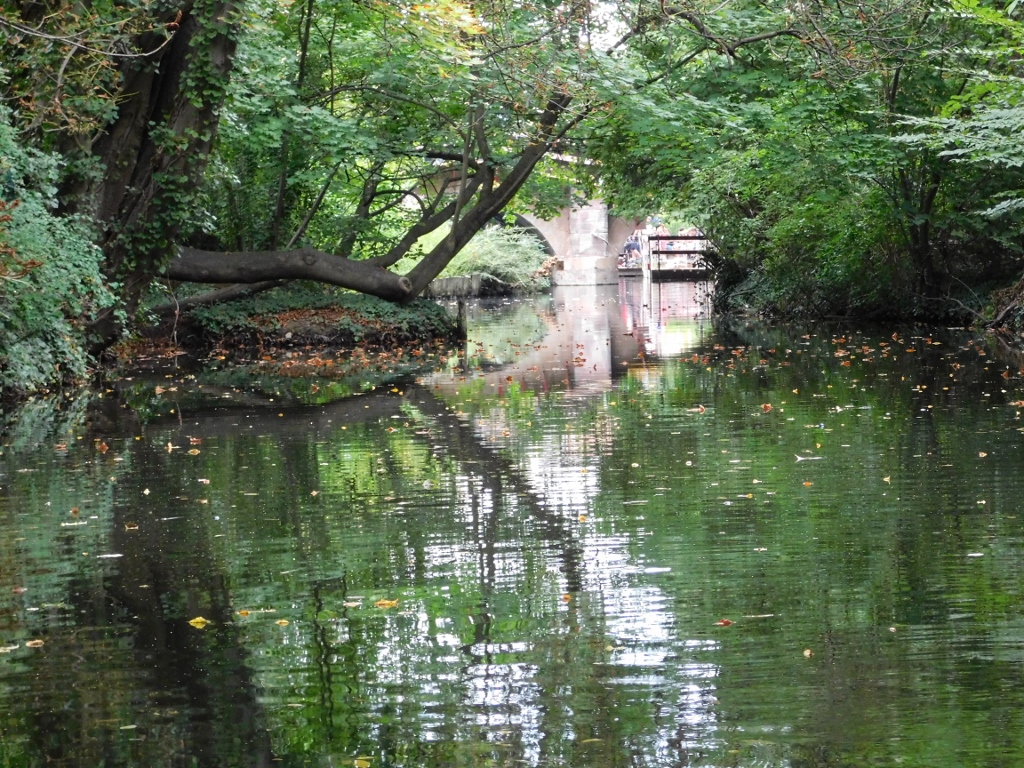 The Lauch river
The Lauch river
Very soon we turned around and headed for the more densely populated sections of Little Venice.
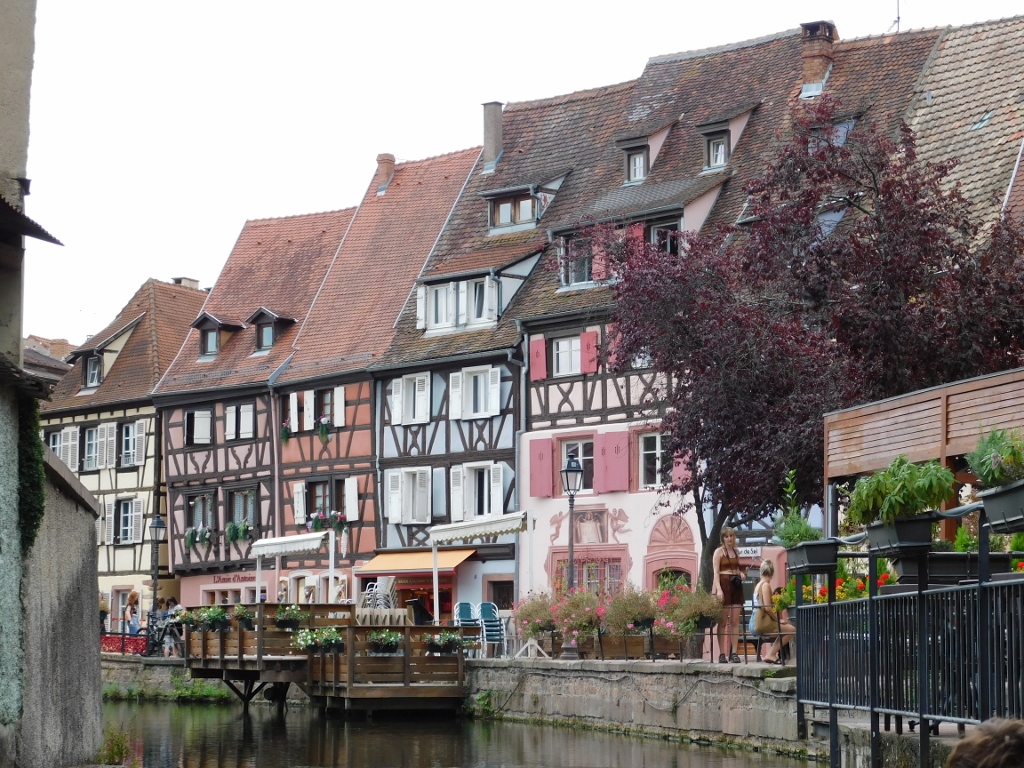 Little Venice
Little Venice
At some point we turned around again and headed back for the pier from which we first started. The tour takes about half an hour and that is quite enough.
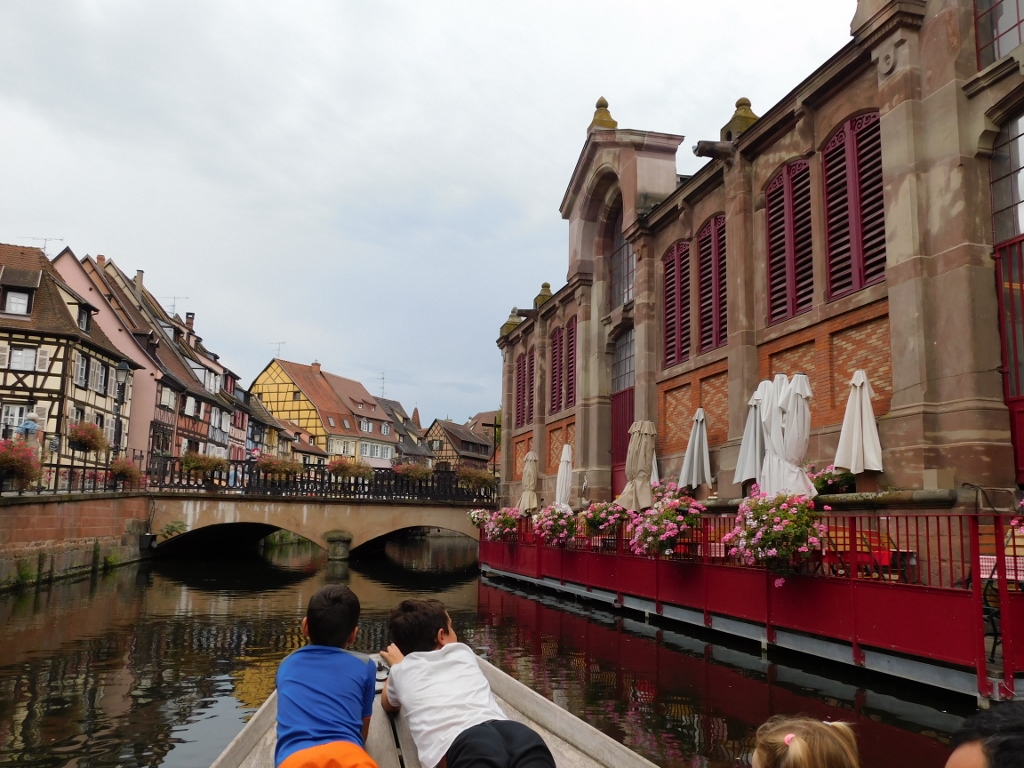 Little Venice; the covered market is to the right
Little Venice; the covered market is to the right
Along the way, we passed by a building that seemed relatively simple in comparison to most of the others, but it had a very interesting element. In the photo below, on the right-hand side, you can see a large vertical overhand on the facade of the building. This was in fact a latrine, so that all of its contents would fall directly into the river.
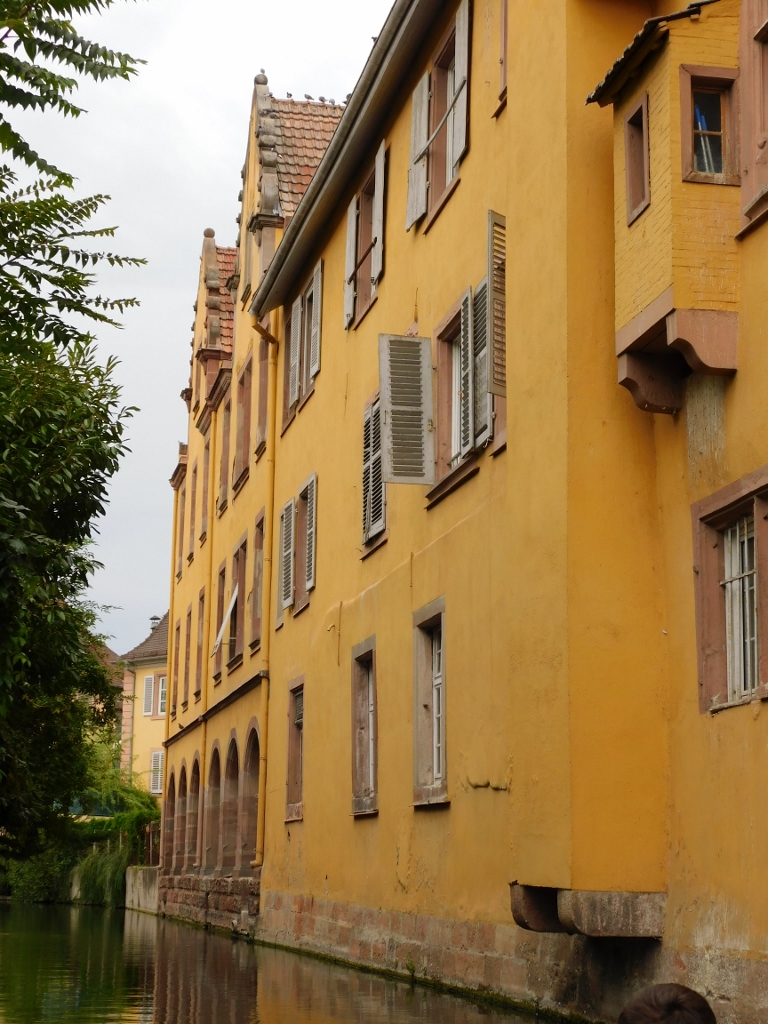 Little Venice, a detail
Little Venice, a detail
Needless to say, such things are no longer done and yet, from time to time, we could see some dead fish during this short boat ride. That did not prevent two boys from trying to catch something.
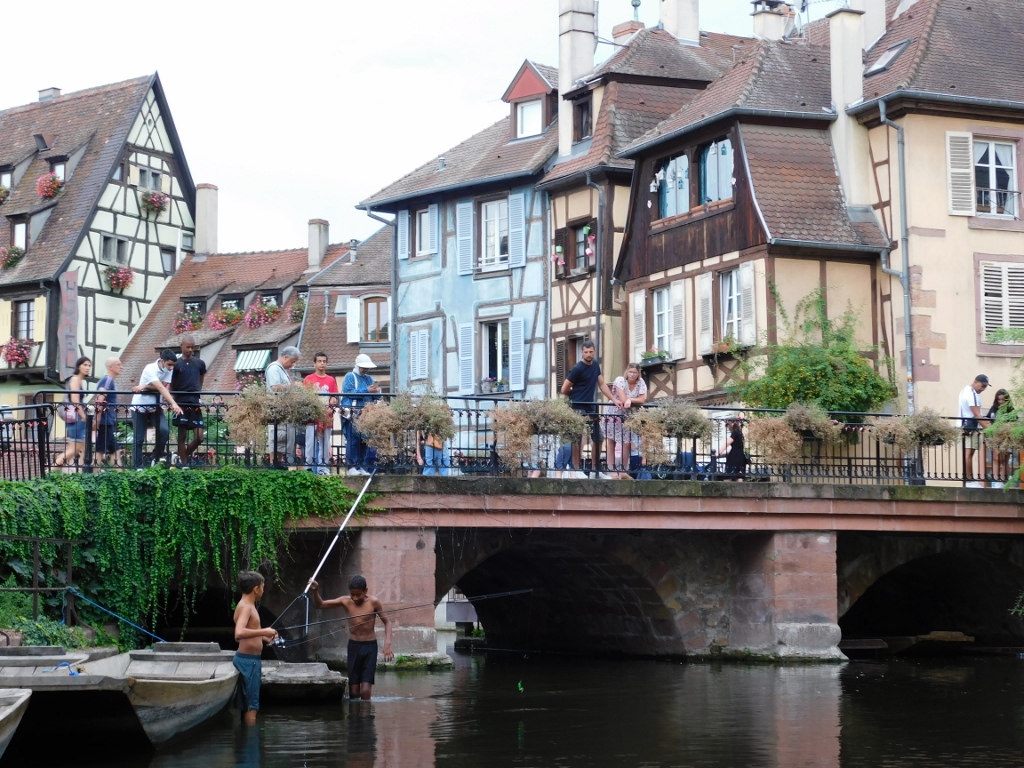 Little Venice
Little Venice
We enjoyed the ride on the Lauch river for a short while, then we disembarked and I continued slowly towards the train station in Colmar.
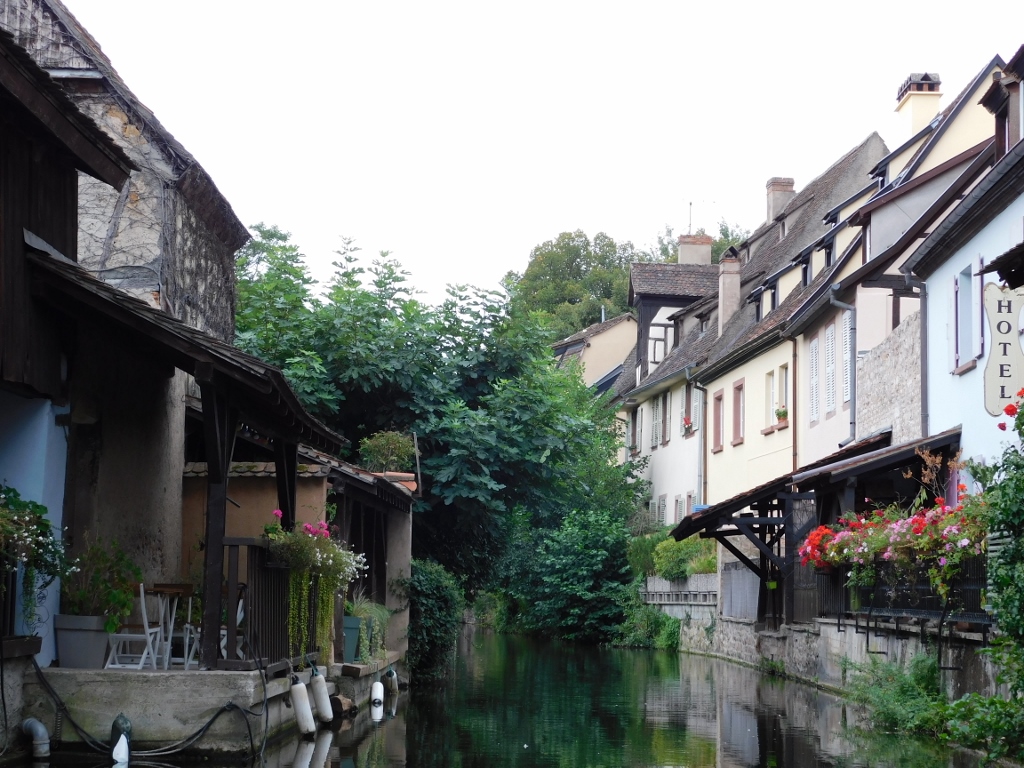 Little Venice
Little Venice
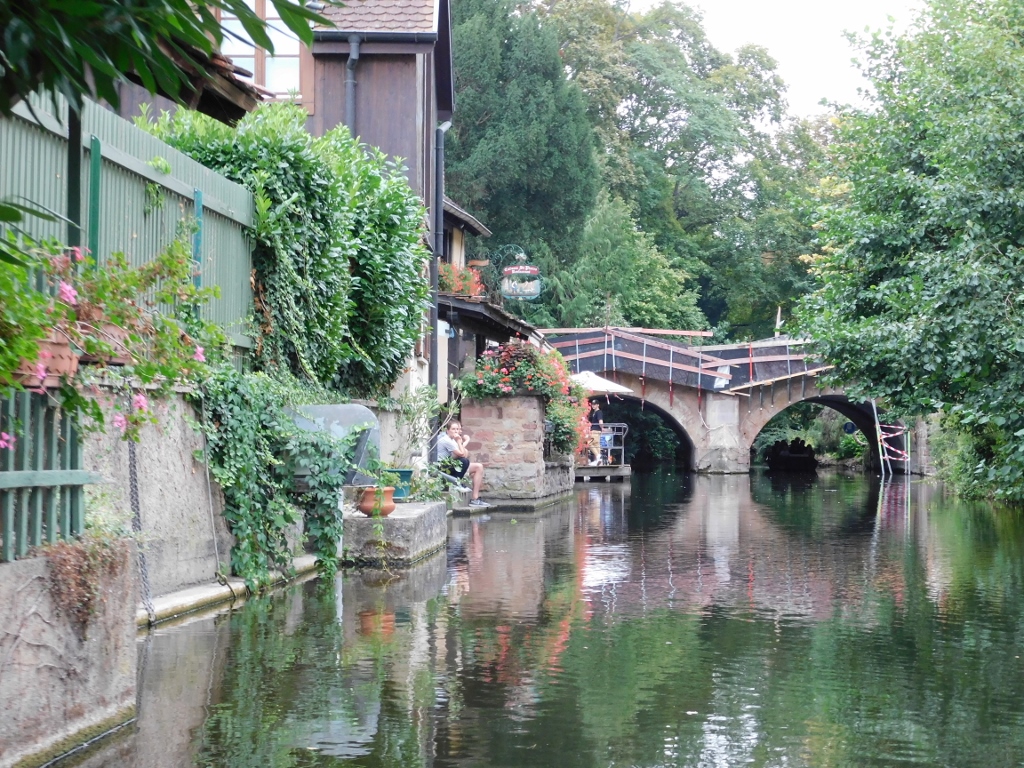 Little Venice
Little Venice
The route took me over the Six Black Mountains Square (Place des Six-Montagnes-Noires) where there is an 1888 fountain the statue of which is another piece by Bartholdi.
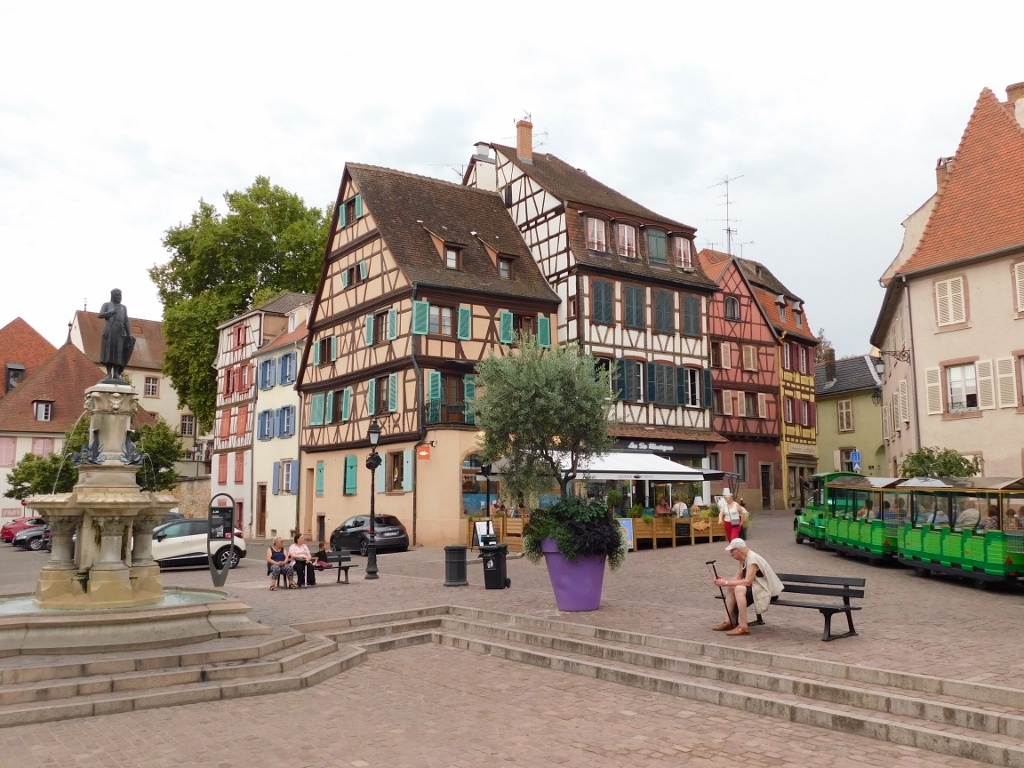 Colmar square with an interesting name
Colmar square with an interesting name
Since I’m mentioning Frédéric Auguste Bartholdi, the creator of the Statue of Liberty, on my way to the railway station, I often started to see metal triangles with engraved drawing of the Statue of Liberty that were firmly embedded in the pavement. It was only later that I found out what this was about: the tops of the triangles point in the direction of New York and the Statue of Liberty.
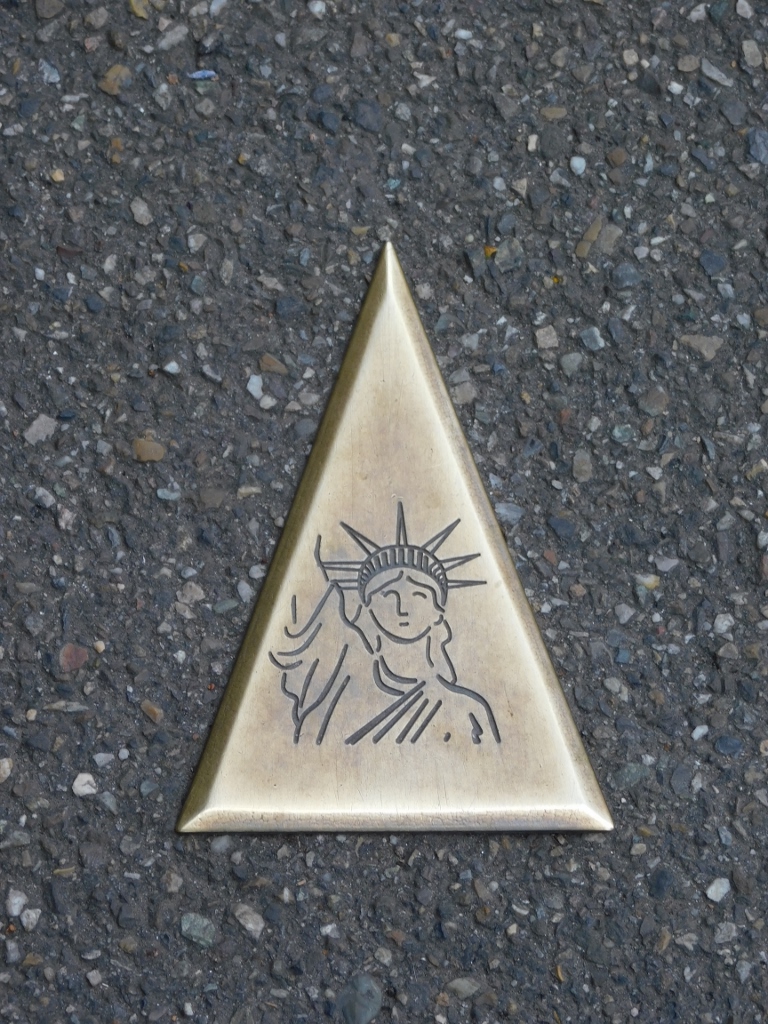 A detail from Colmar
A detail from Colmar
Soon enough I reached the railway station in Colmar and so I returned nicely to the very comfortable room that I had rented where I could rest well after the rather strenuous day. My plans for the following day again involved some sightseeing outside Mulhouse.
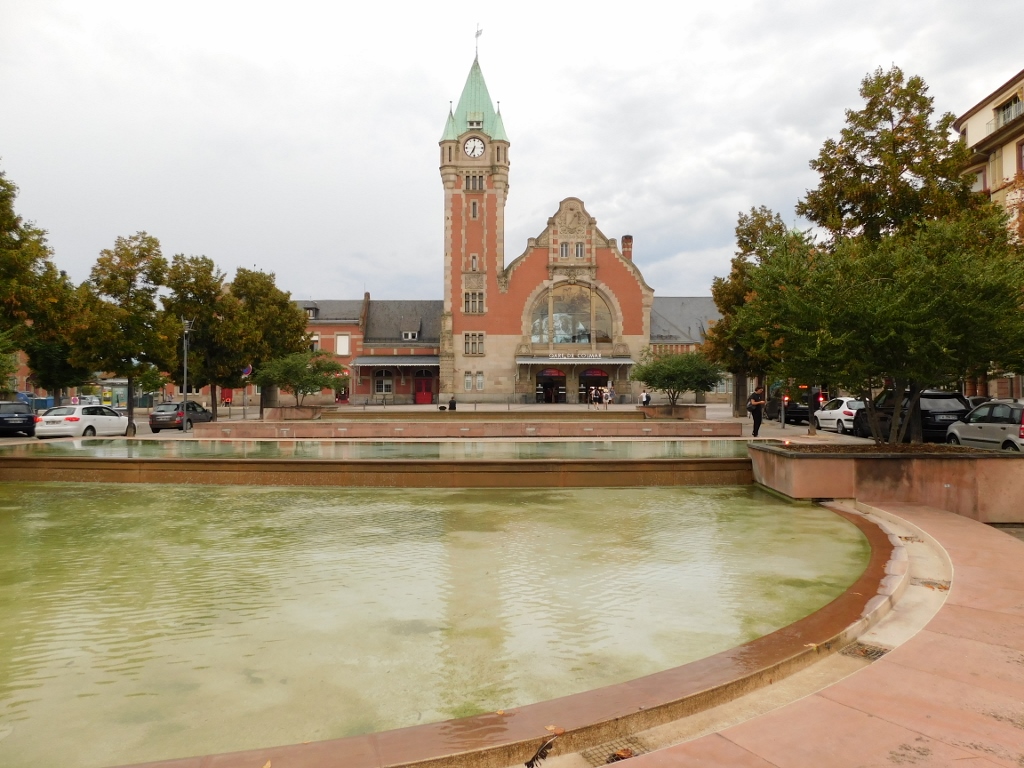 Train Station in Colmar and the plaza in front of it
Train Station in Colmar and the plaza in front of it
When I was making my plans for this trip, I knew I would have an “extra day” which I thought I could lazily spend in Mulhouse, but since I did not manage to visit Belfort on the day when I had a rented car that I had to return, I decided to use this day with no plans to go precisely to Belfort.
However, somehow it seemed little and I am a very ambitious person primarily when it comes to journeys and sightseeing, so I was looking at the map and realised that in the same direction, albeit a little farther to the west, there was the town of Besançon.
Besançon has some fortifications that are so important because of the architecture that they are in the UNESCO’s World Heritage List and that was certainly the main reason why I decided to go to this place.
Of course, there are a few common sense questions in connection with this idea. The first one is: do I know anything about military fortifications? Absolutely not. Then, am I interested in the military fortifications architecture? Well, essentially not. And finally, do the answers to the previous two questions prevent me from visiting military fortifications? Certainly not.
And so, early the next day I took TGV, the famous French high-speed train, to Besançon, admittedly with a change along the way.
As for the TGV, this is one of the fastest trains in the world in terms of the speed it reaches in its regular service, but it is interesting that in 2007, during a test ride, a TGV train made a world speed record – 574.8 km/h.
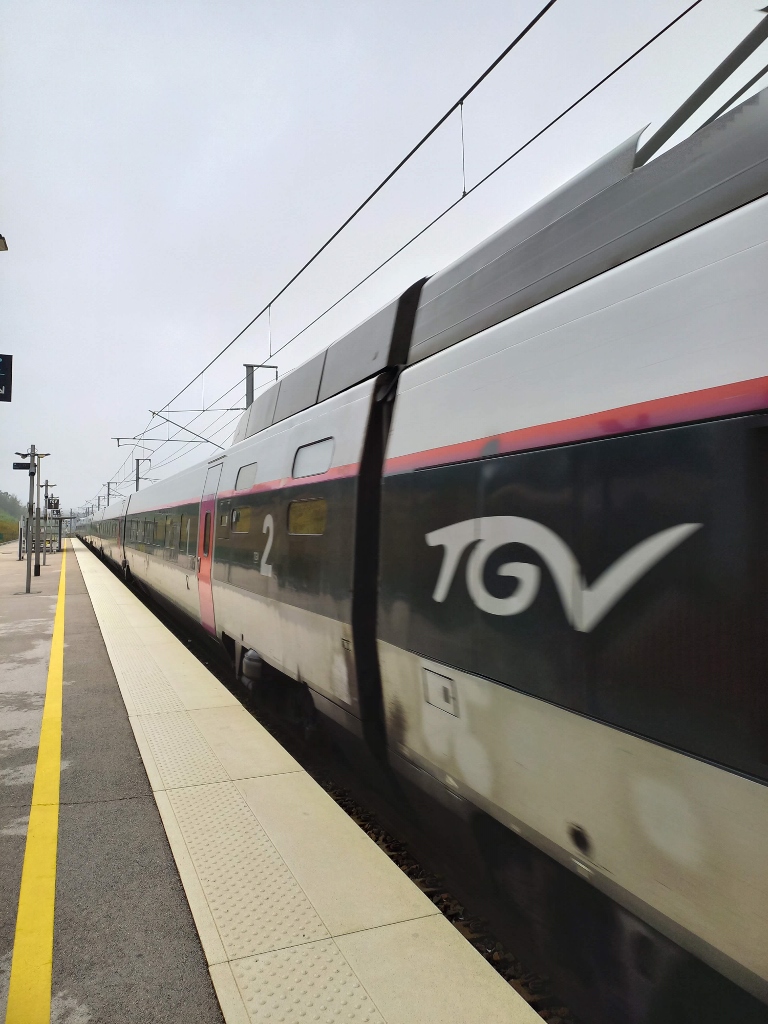 TGV leaving a station
TGV leaving a station
Of course, when you are on the train, you do not have the sensation of the high speed, but it is clear that these trains cannot use all the regular stations, so, on my way to Besançon, I changed trains at one of the new stations that is a dozen kilometres away from the main railway station in the city which I reached by a regular local train.
Since I left Mulhouse early and covered most of the way by a TGV trains, I reached Besançon already at 9.30 am which gave me ample time to visit leisurely what I thought this city offered.